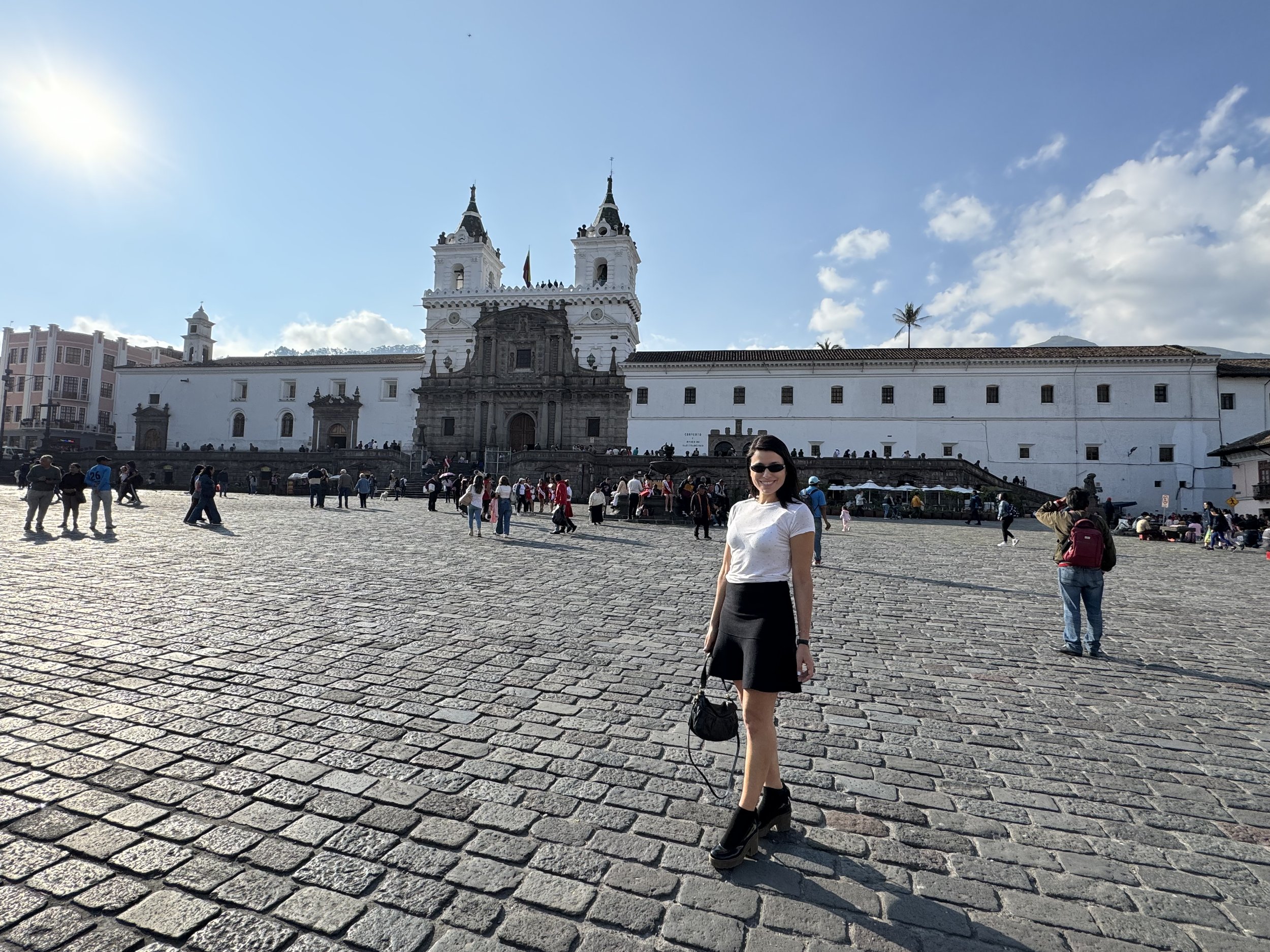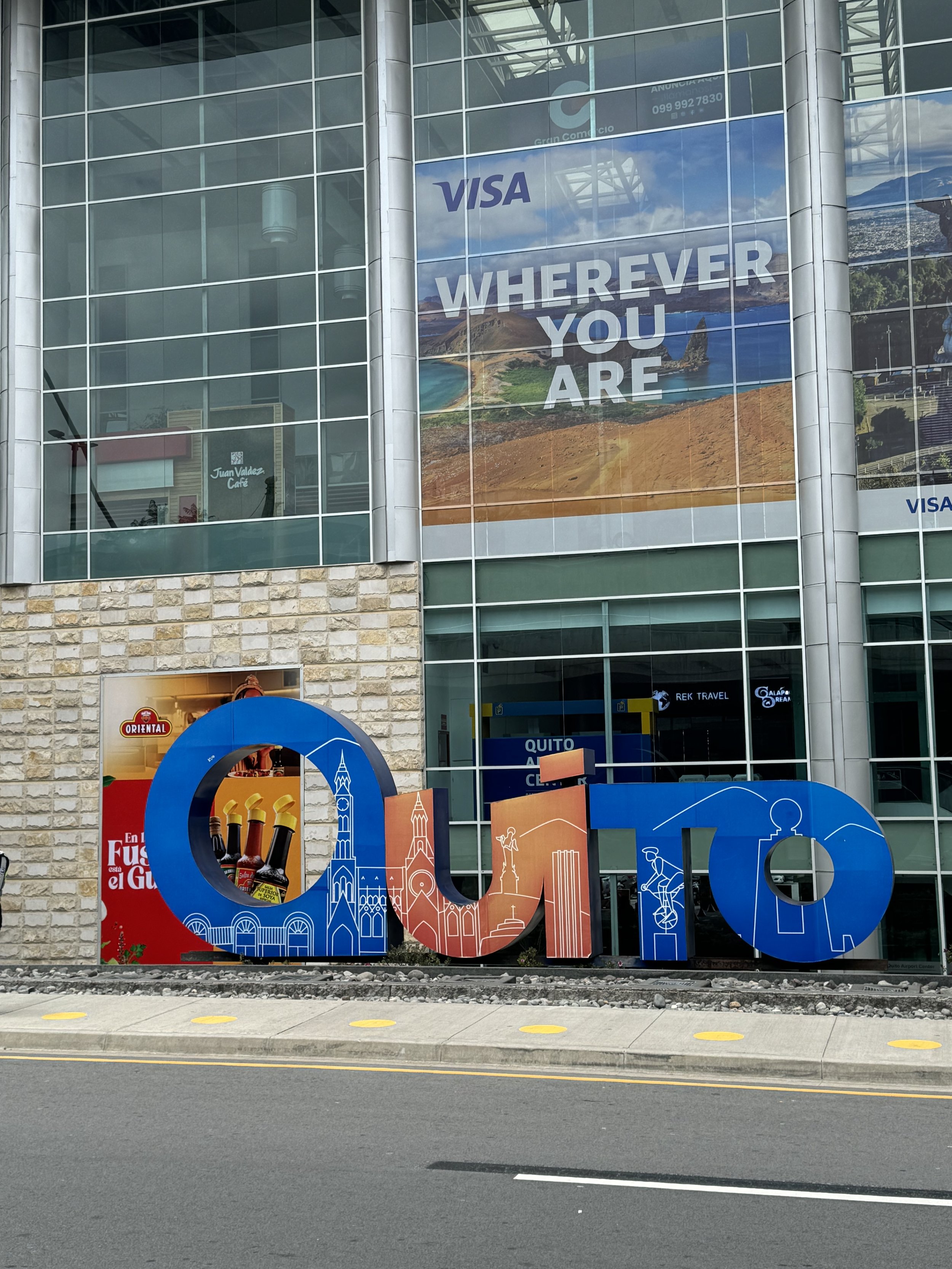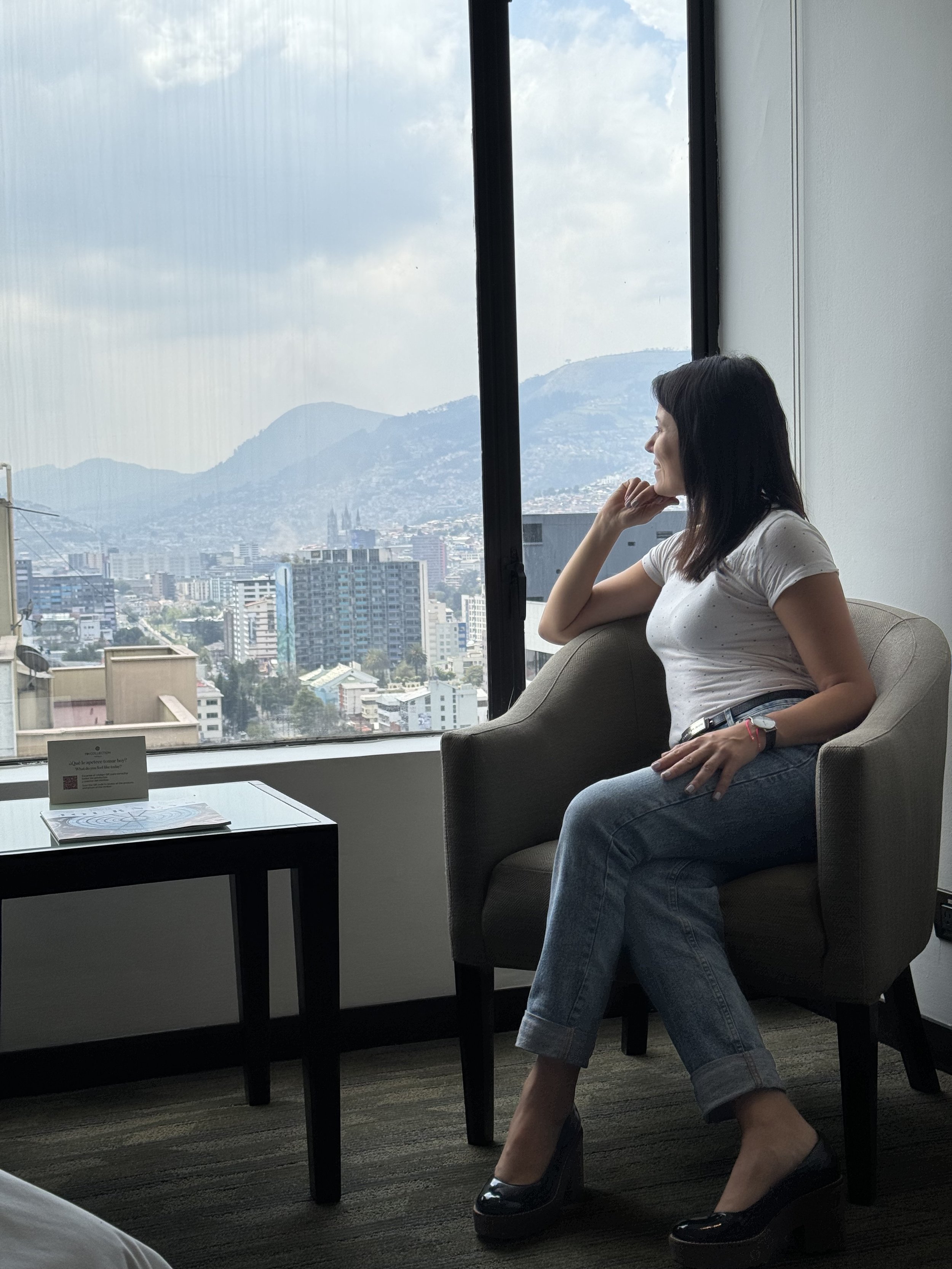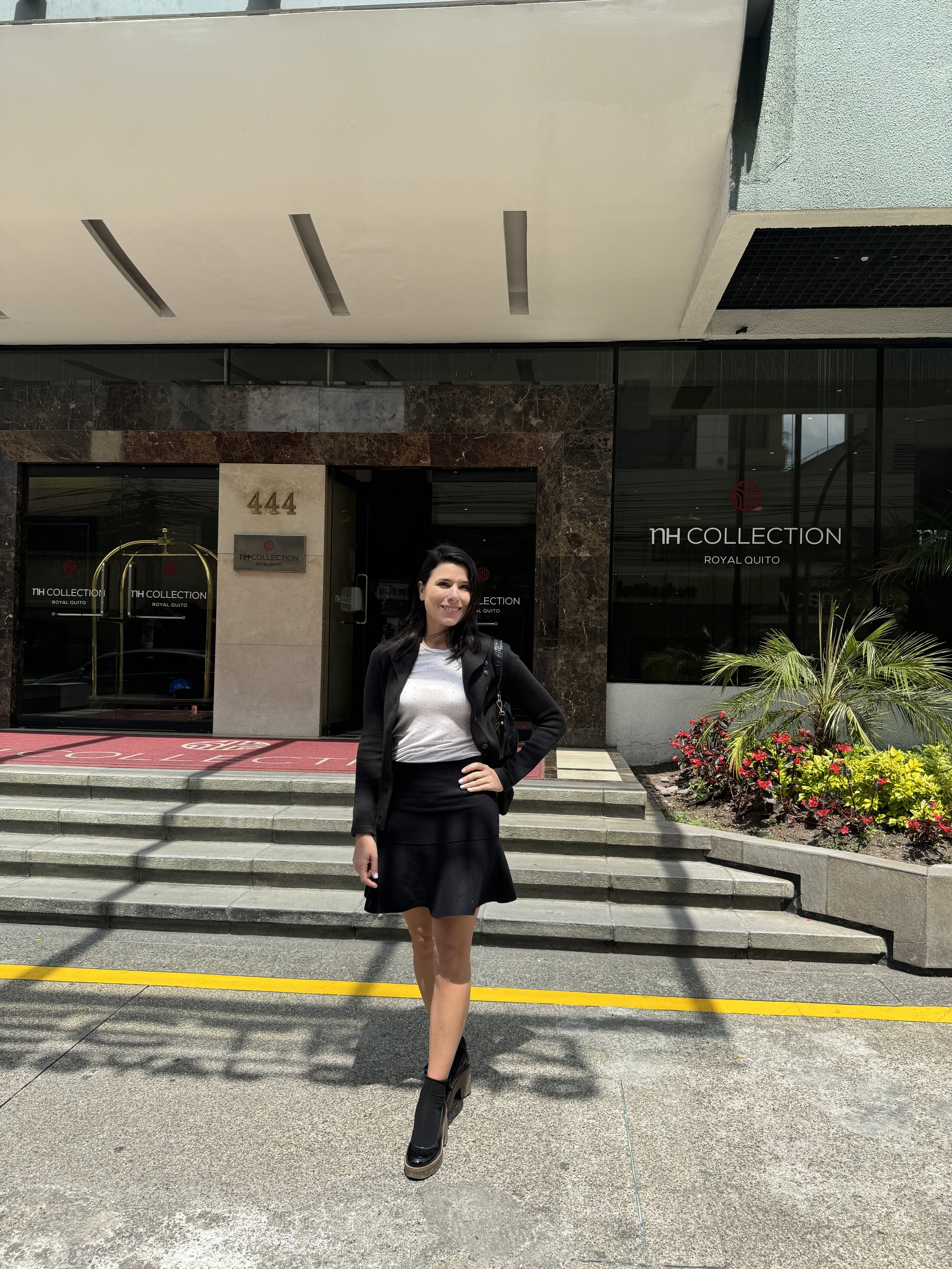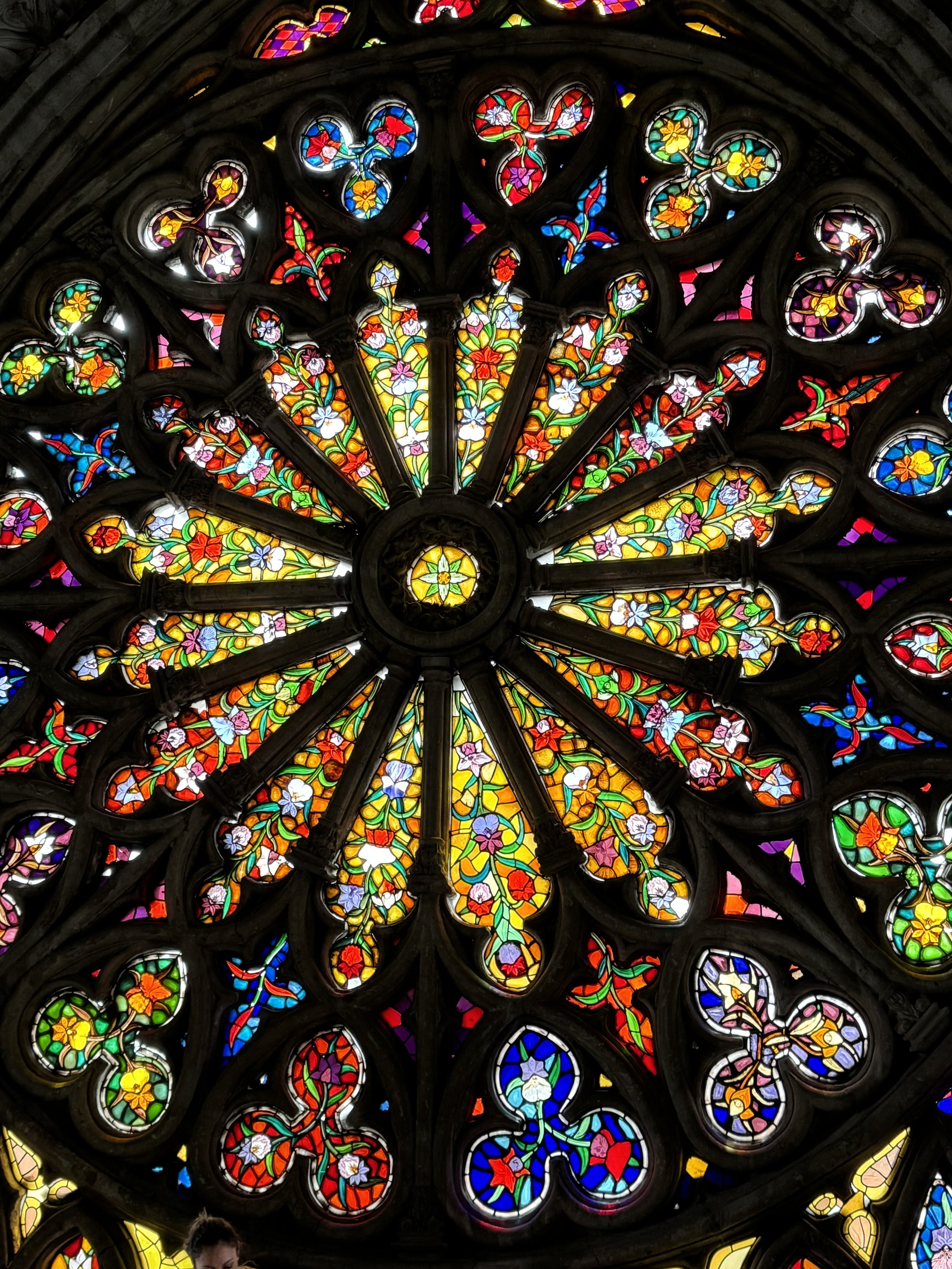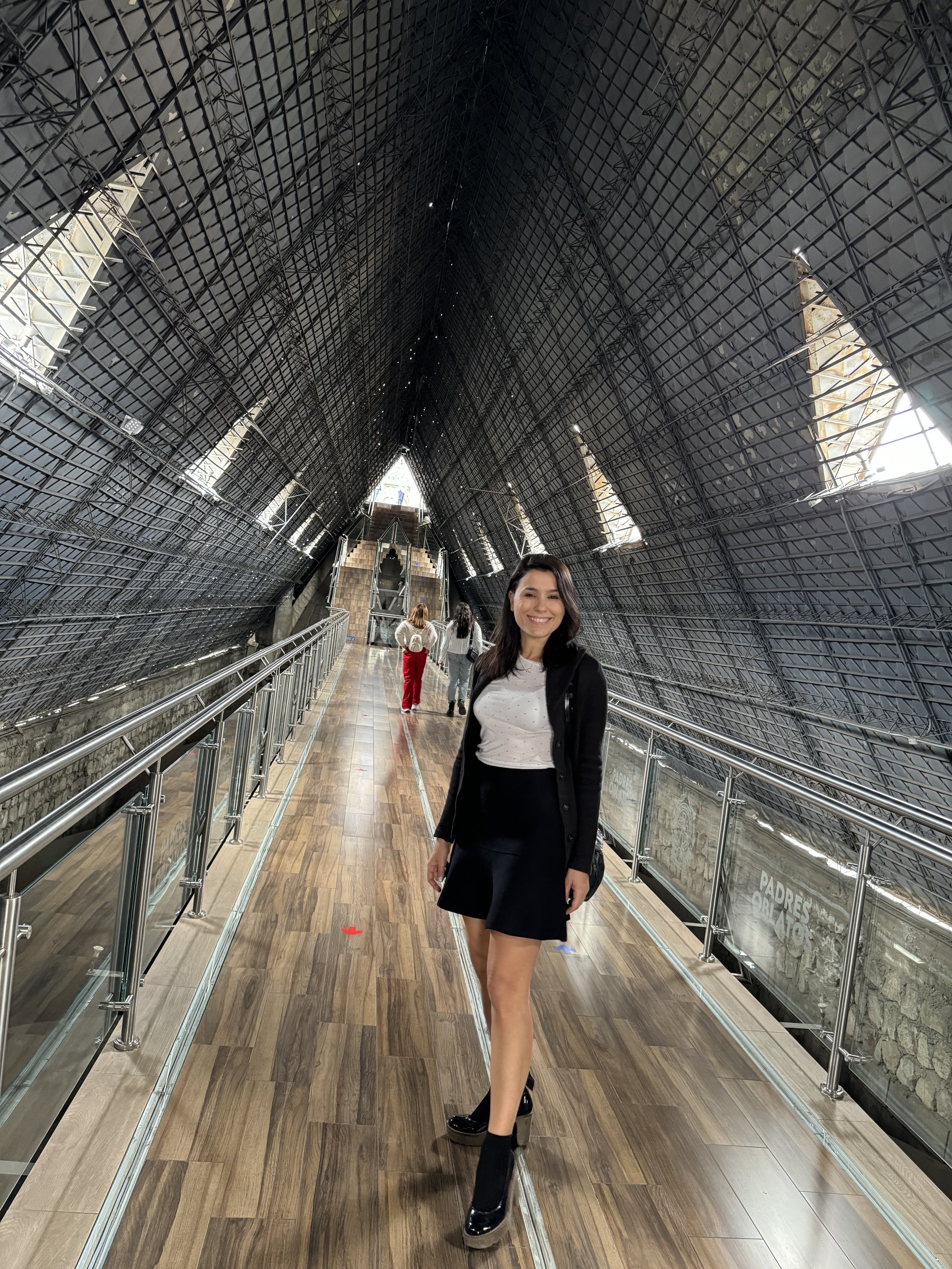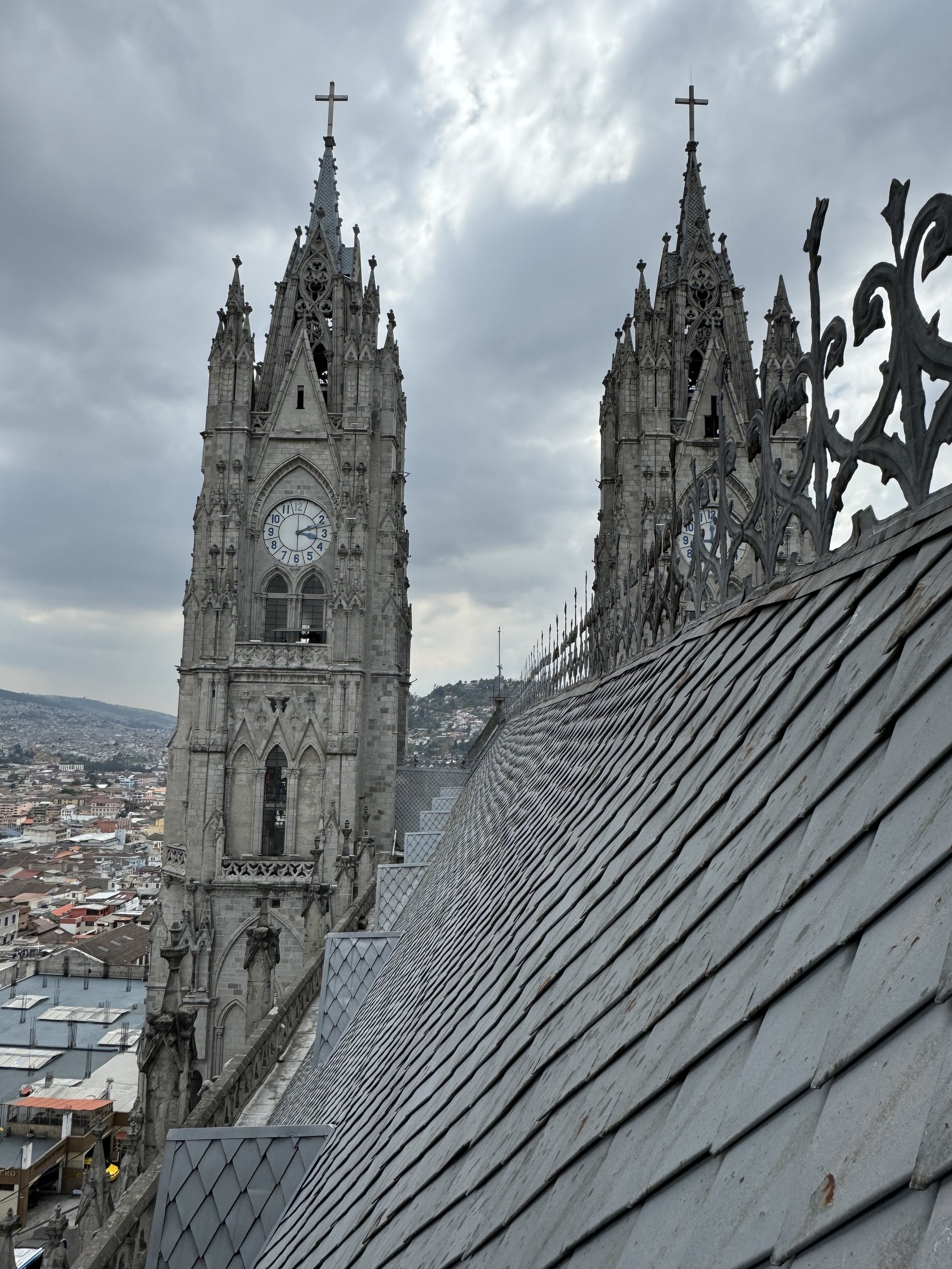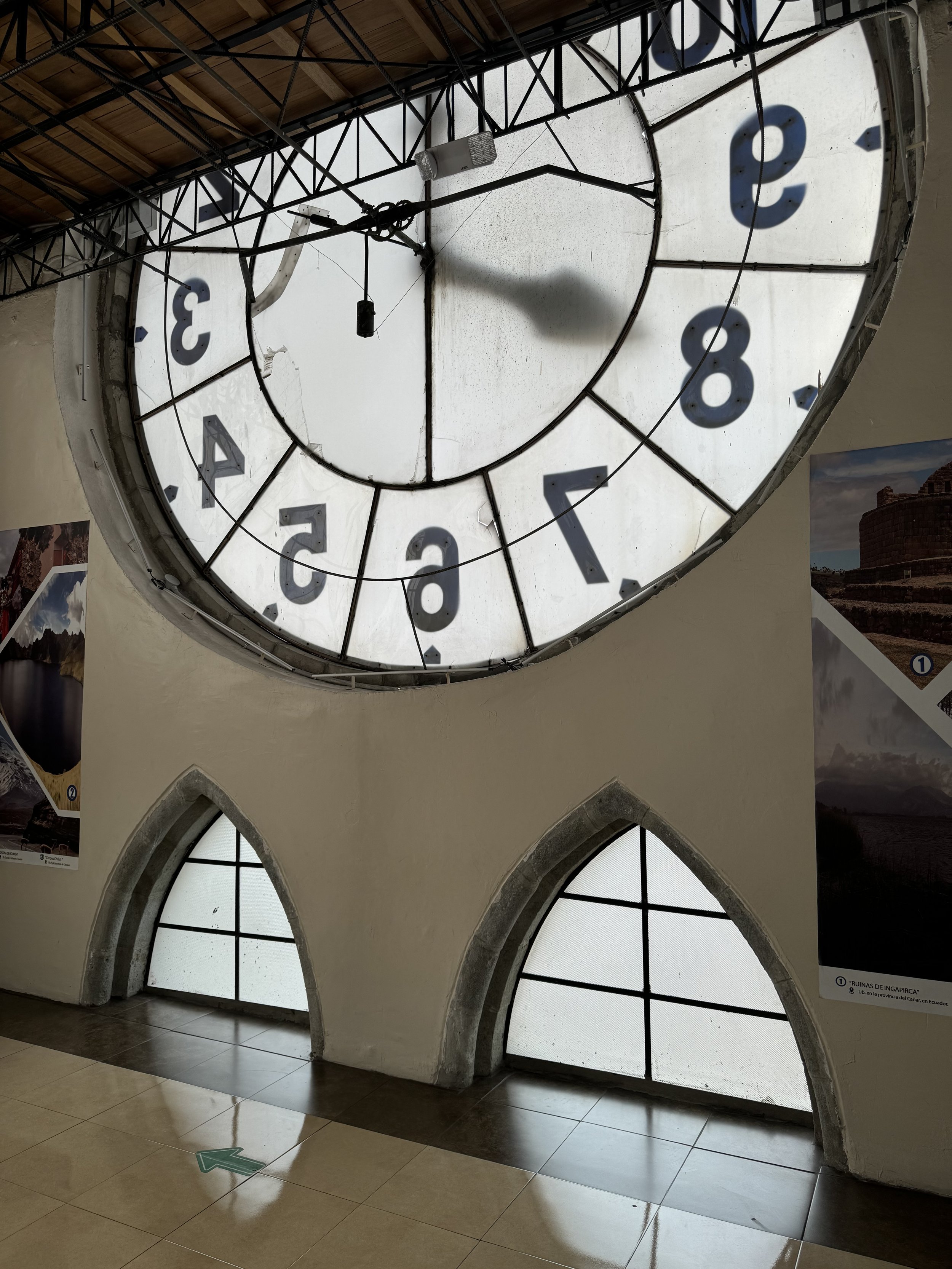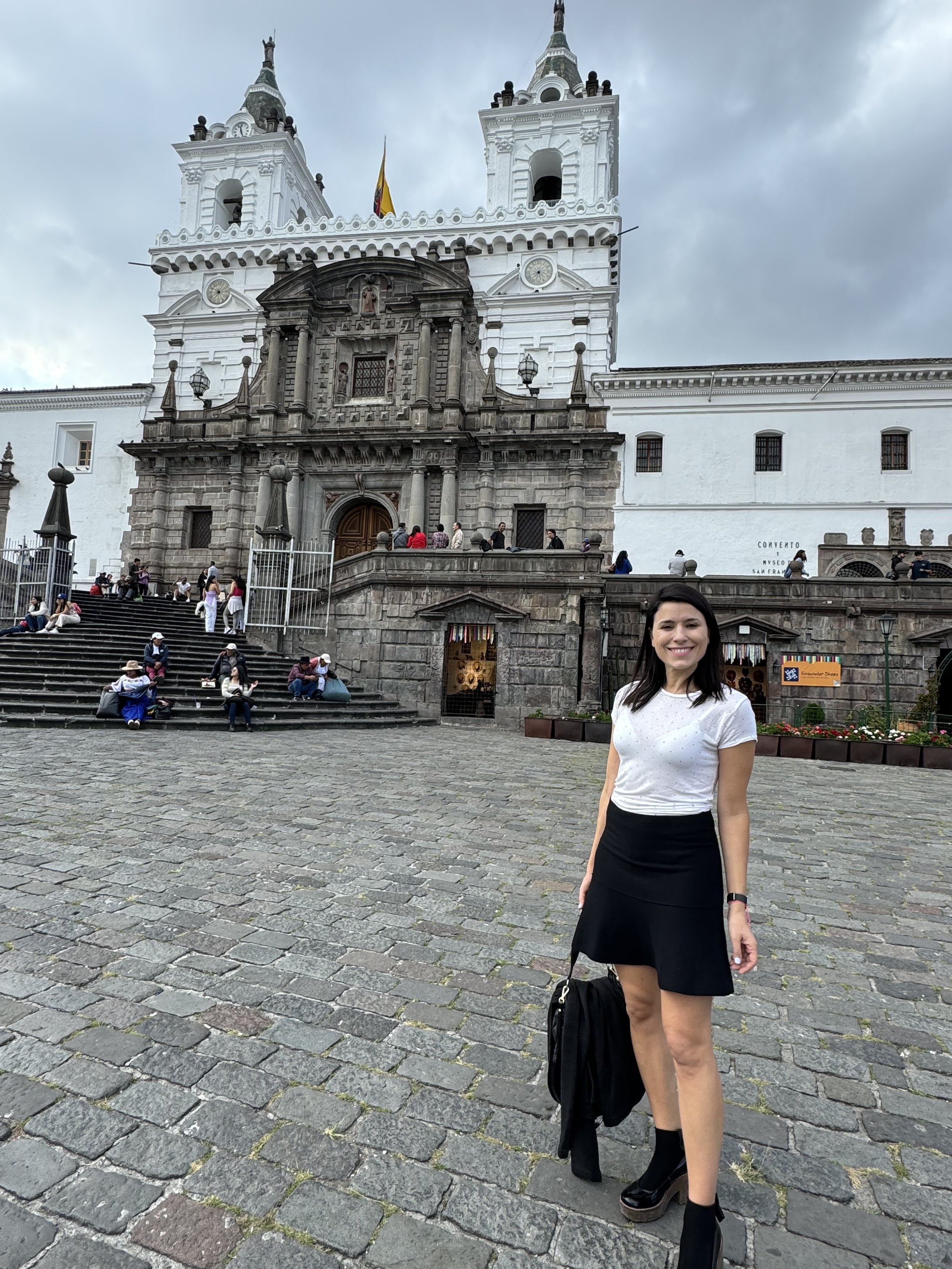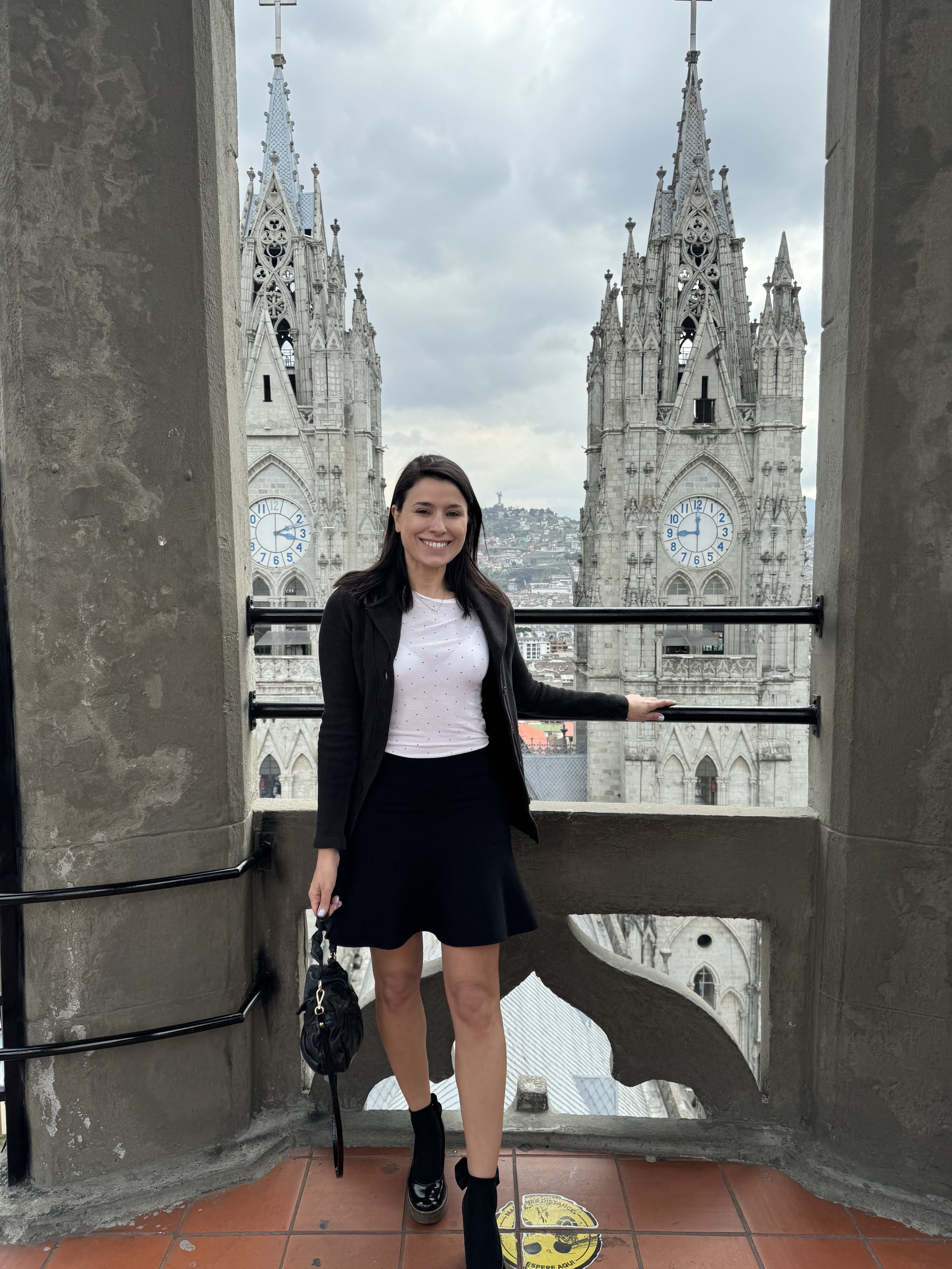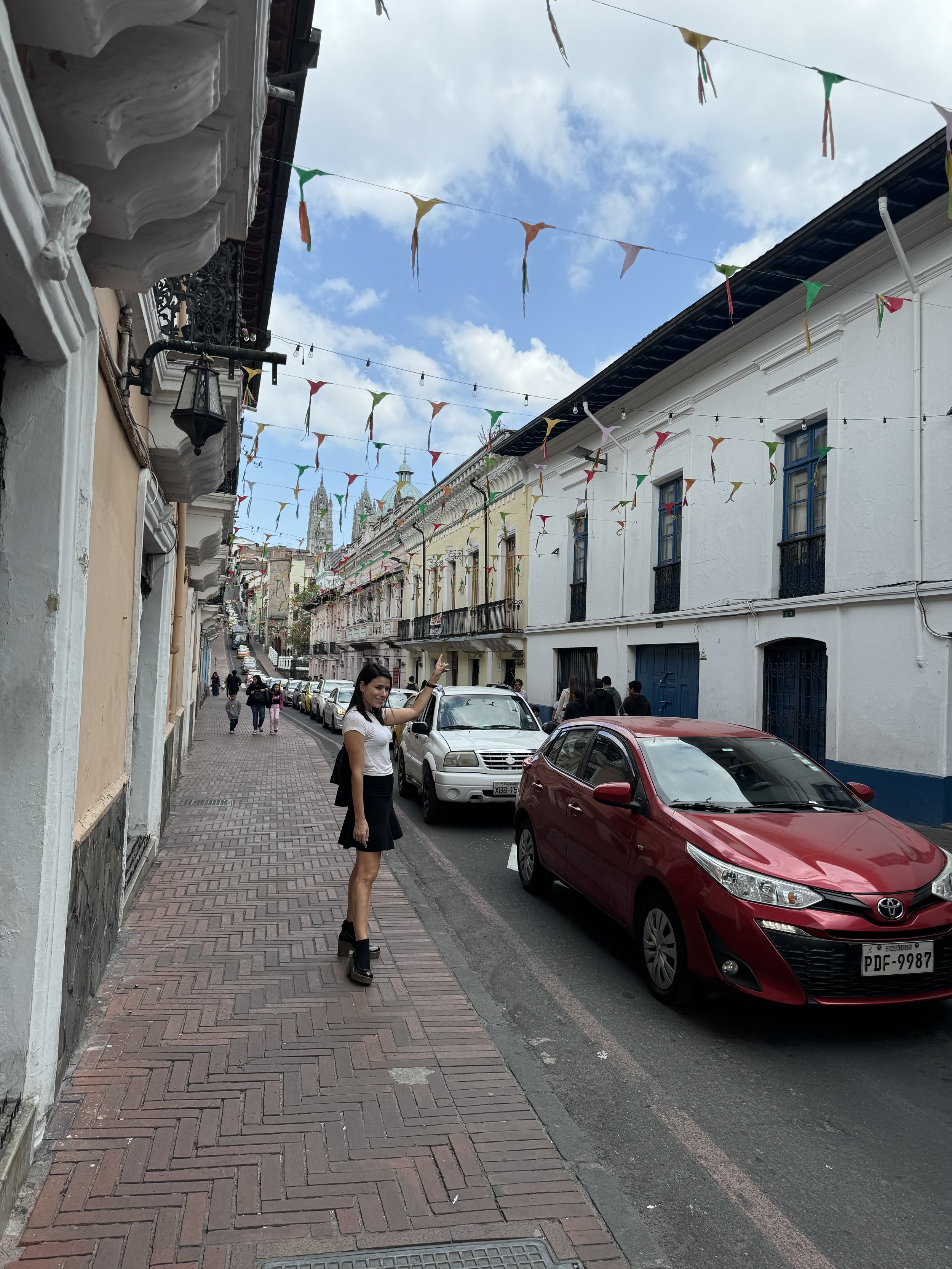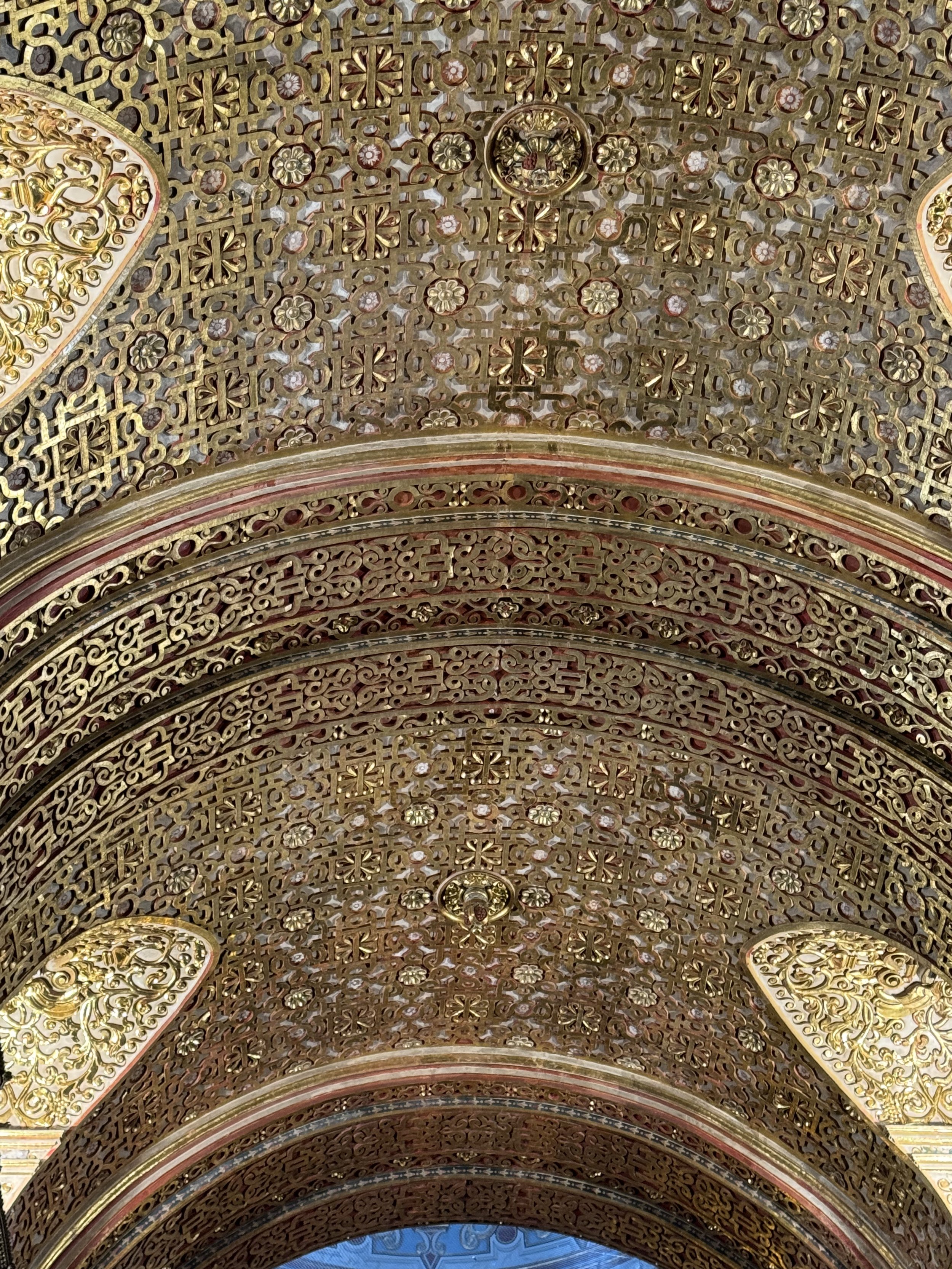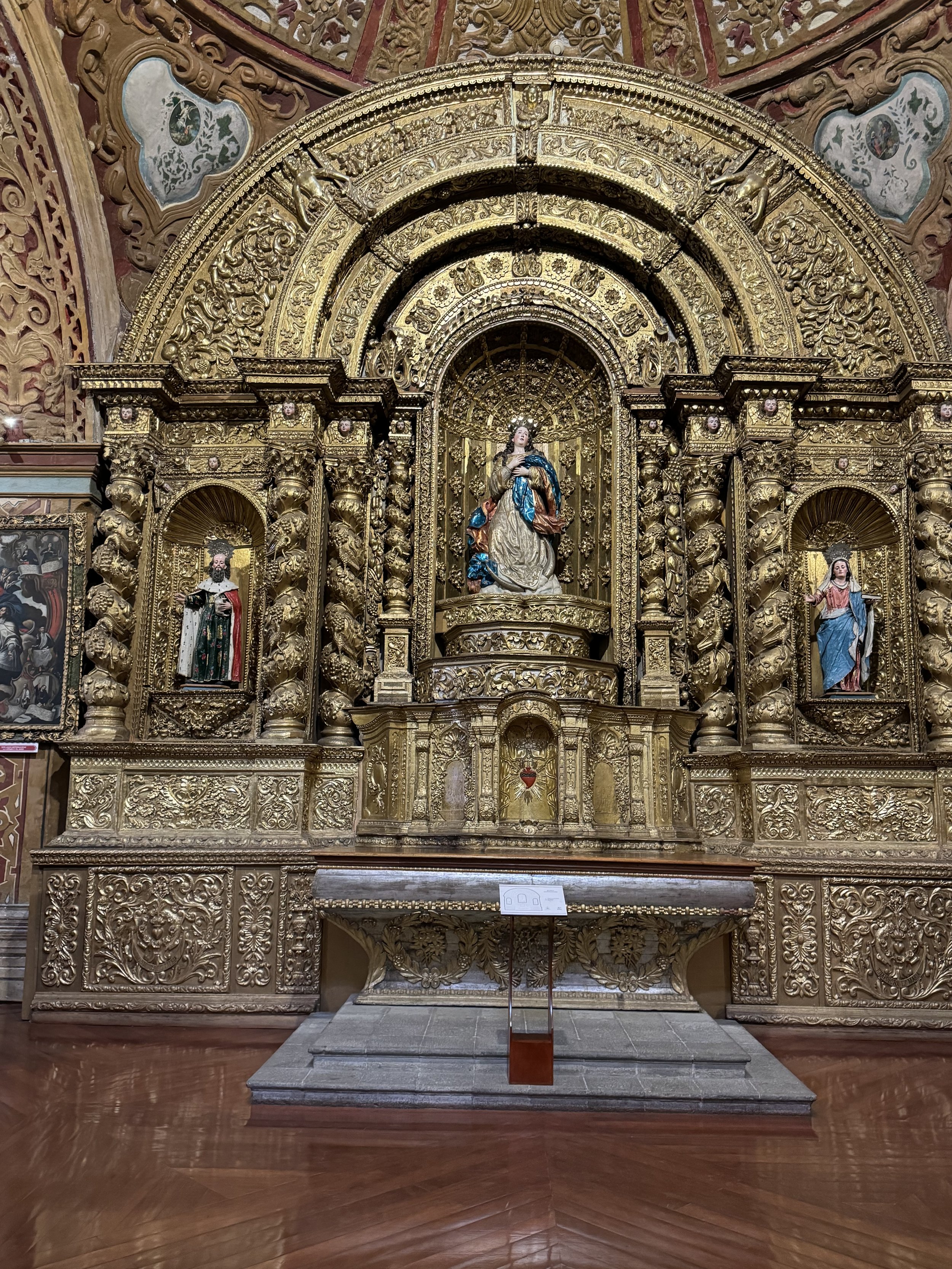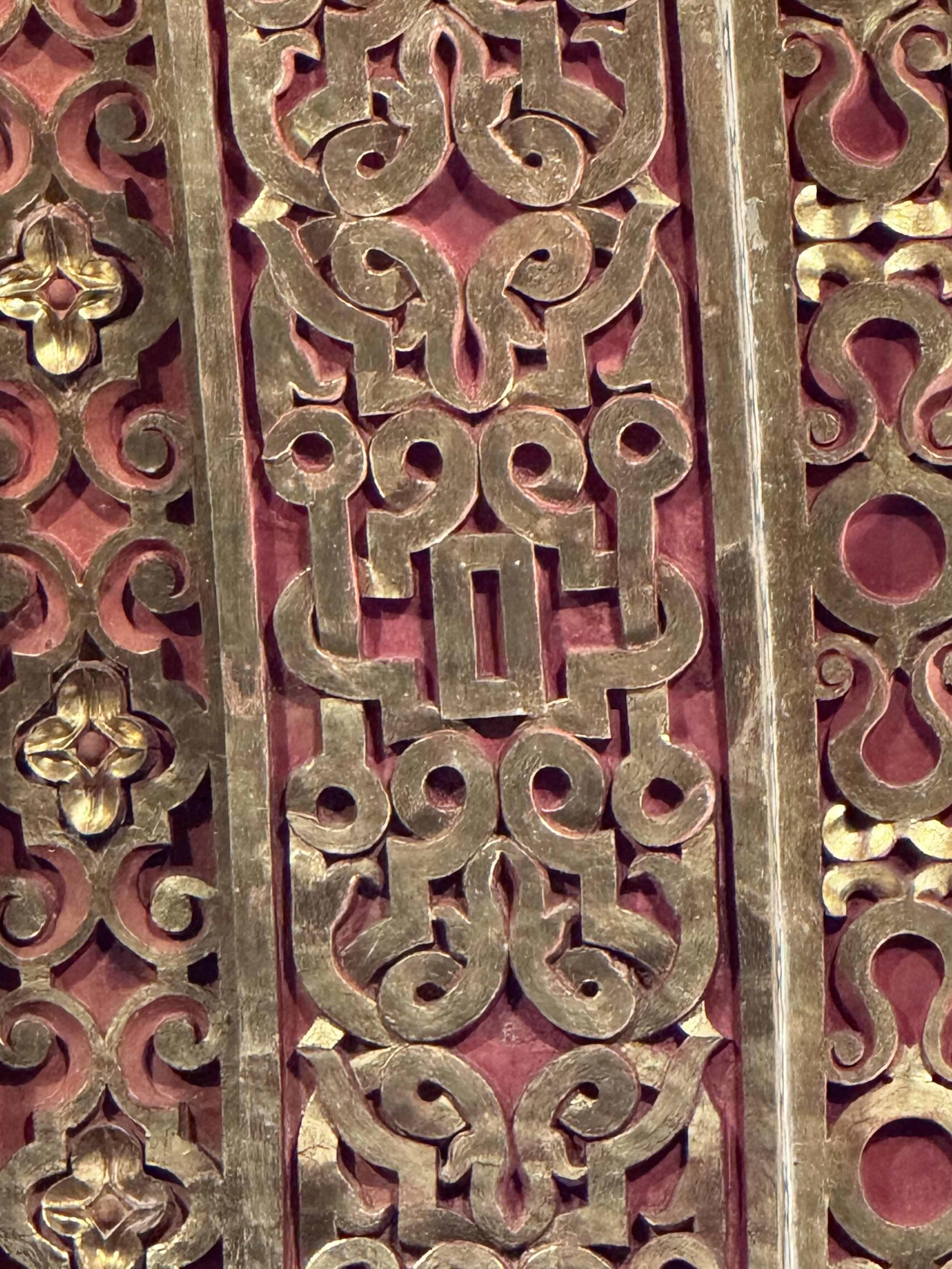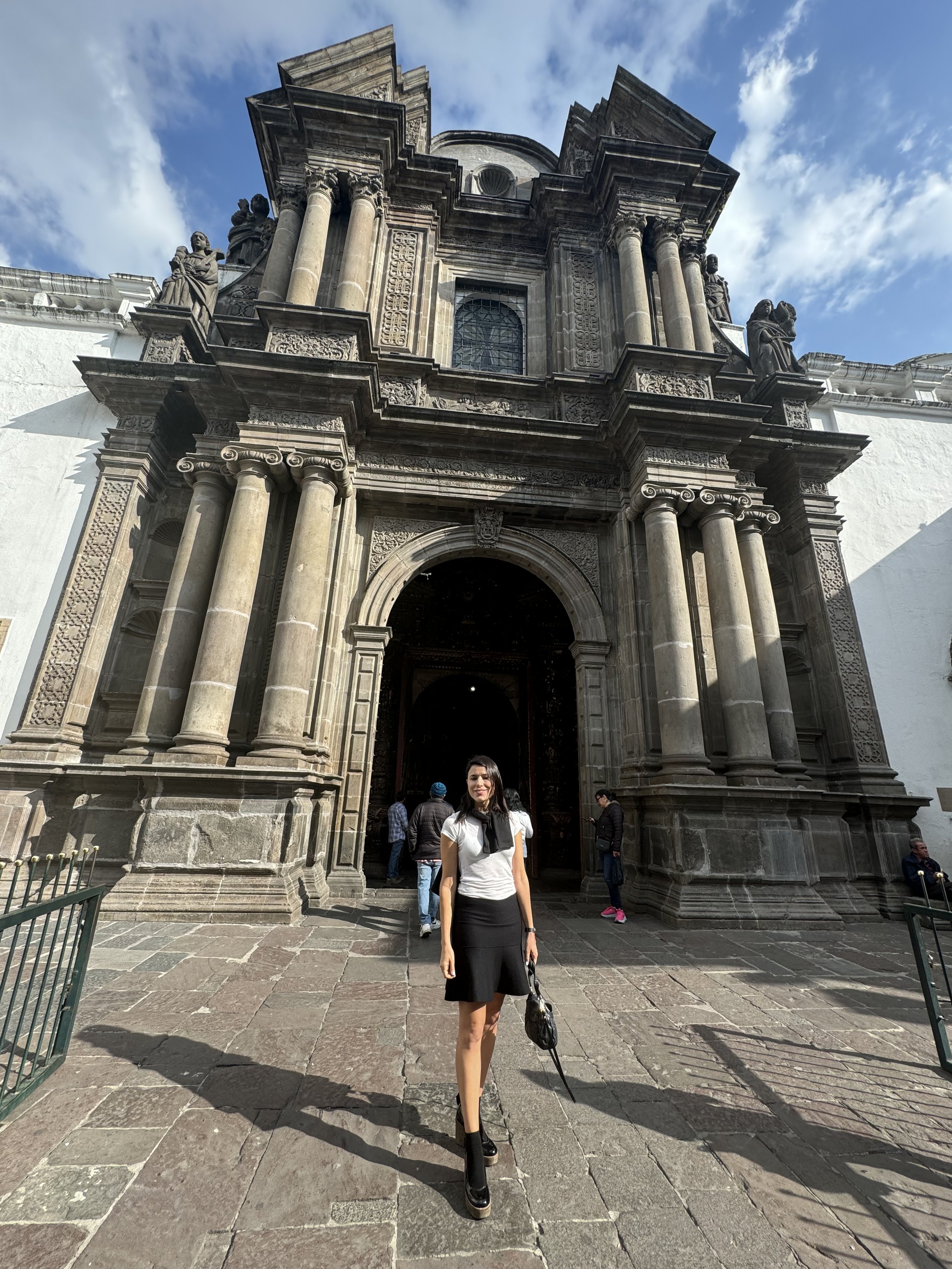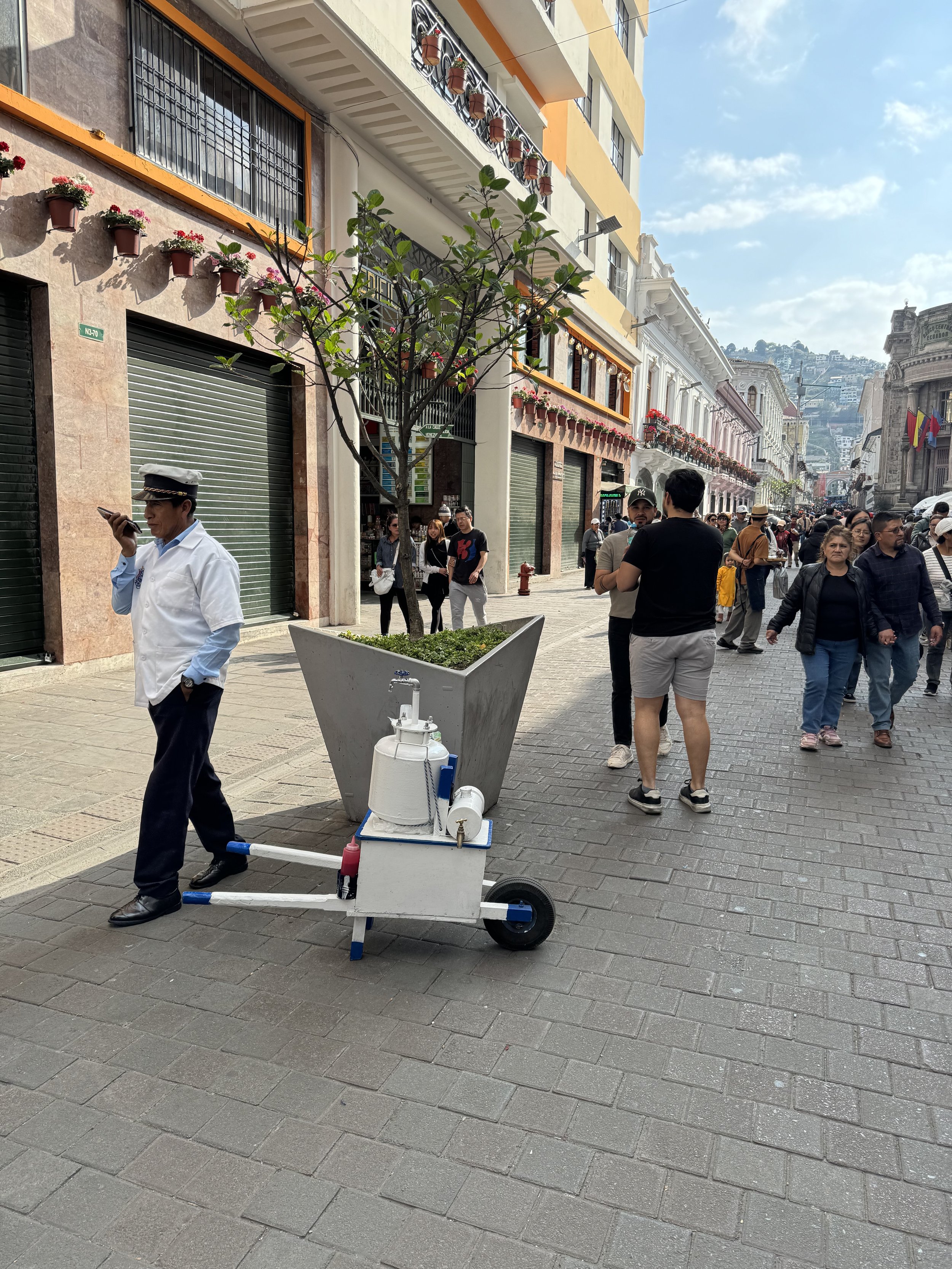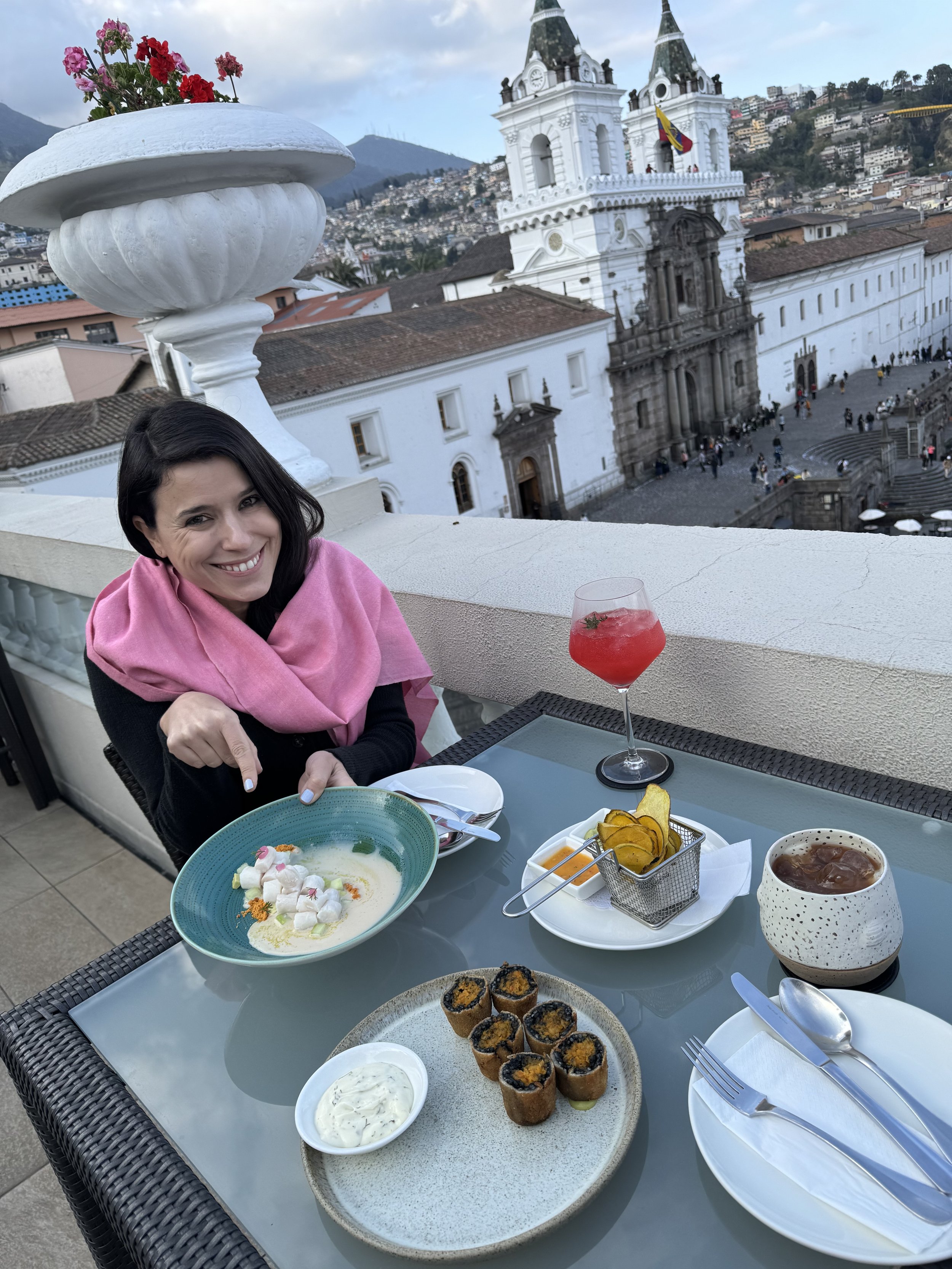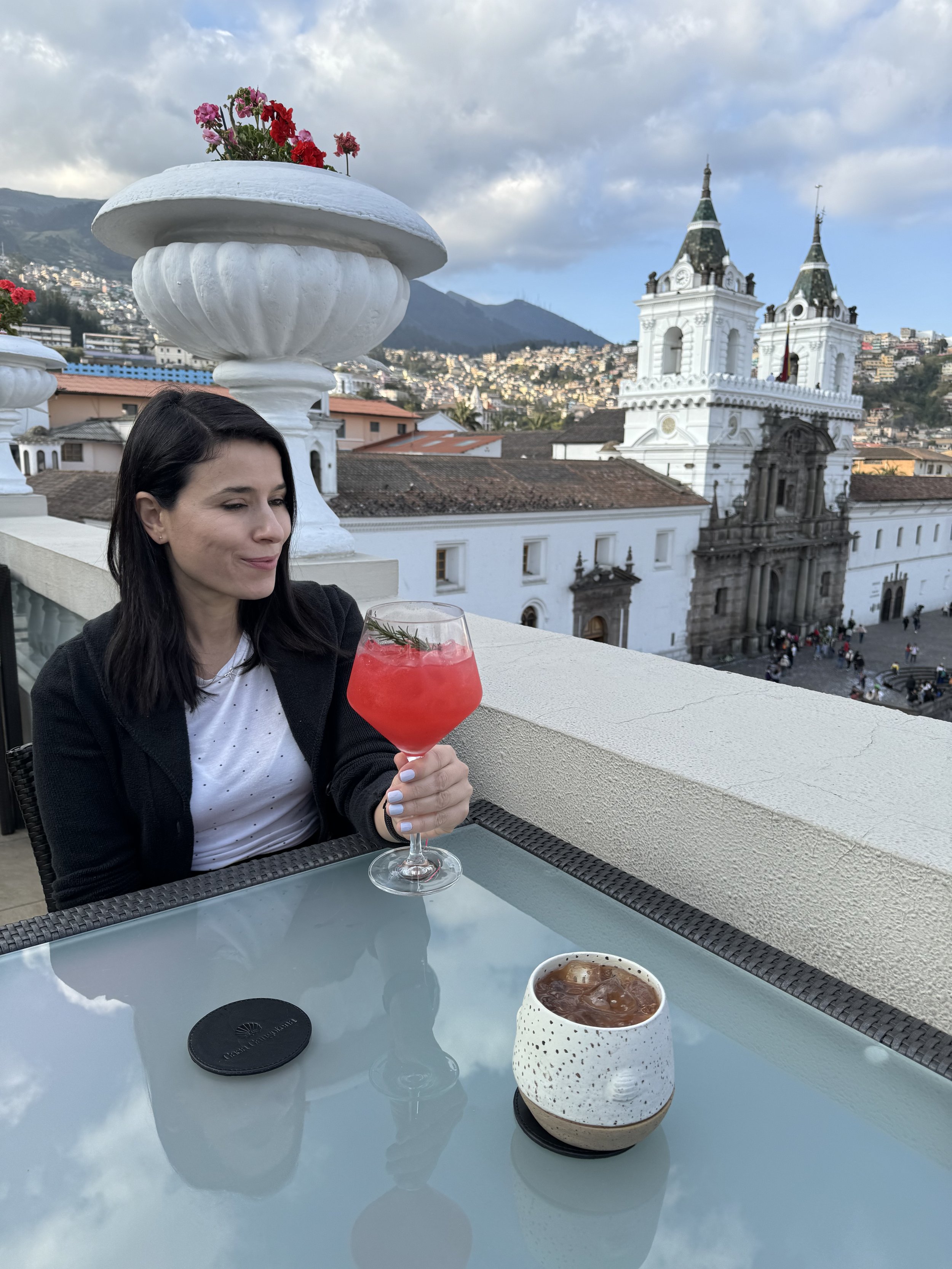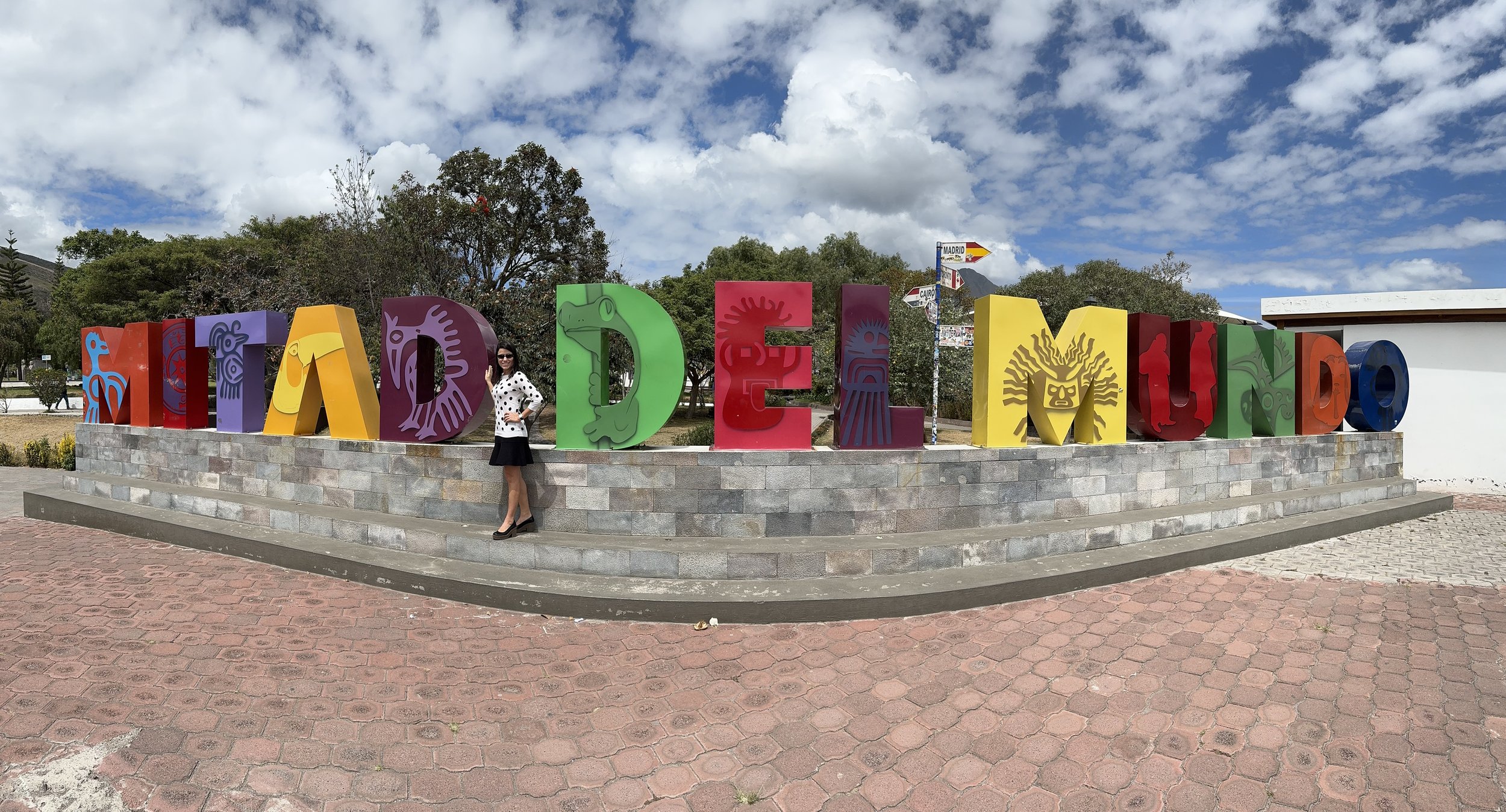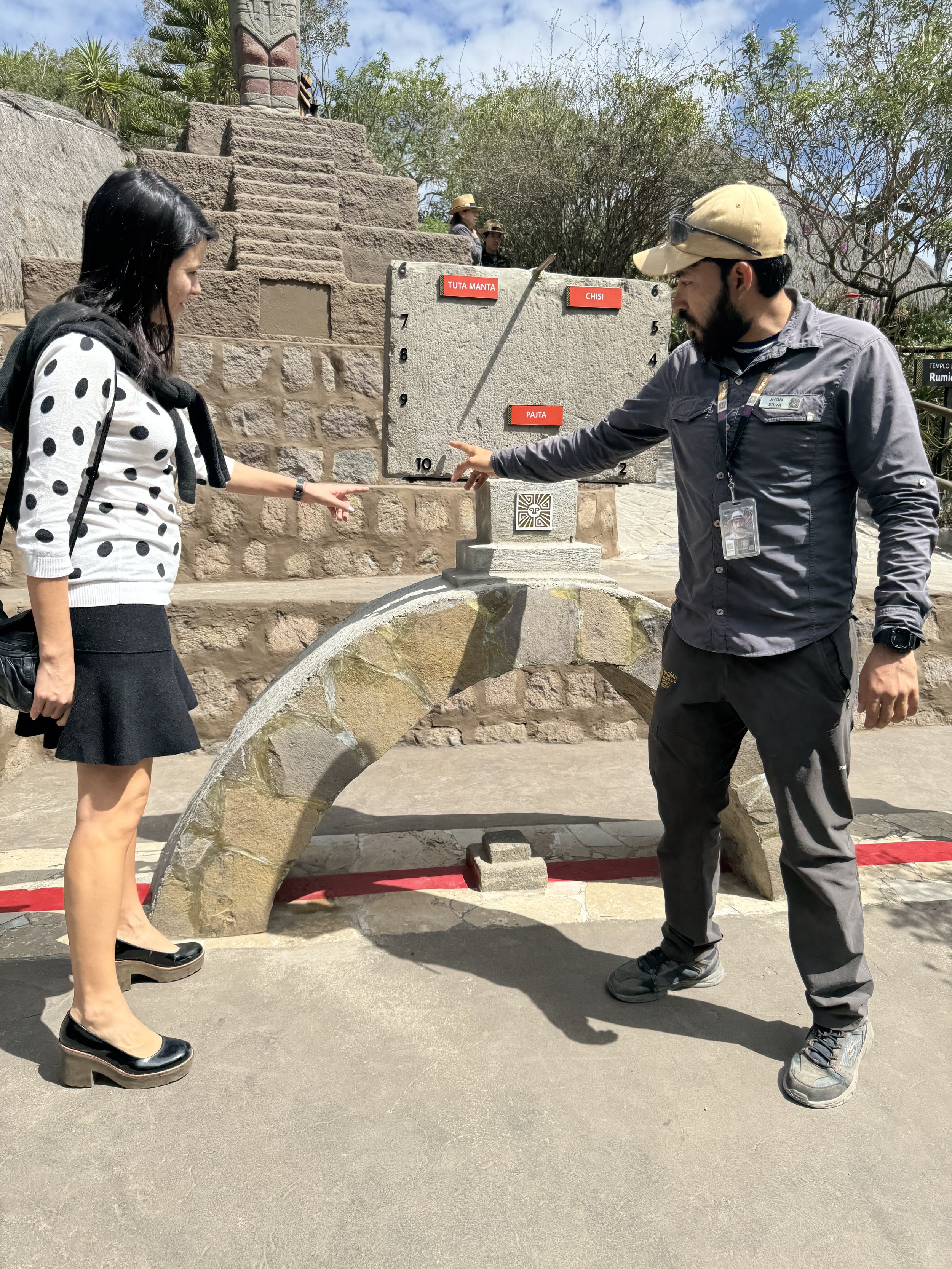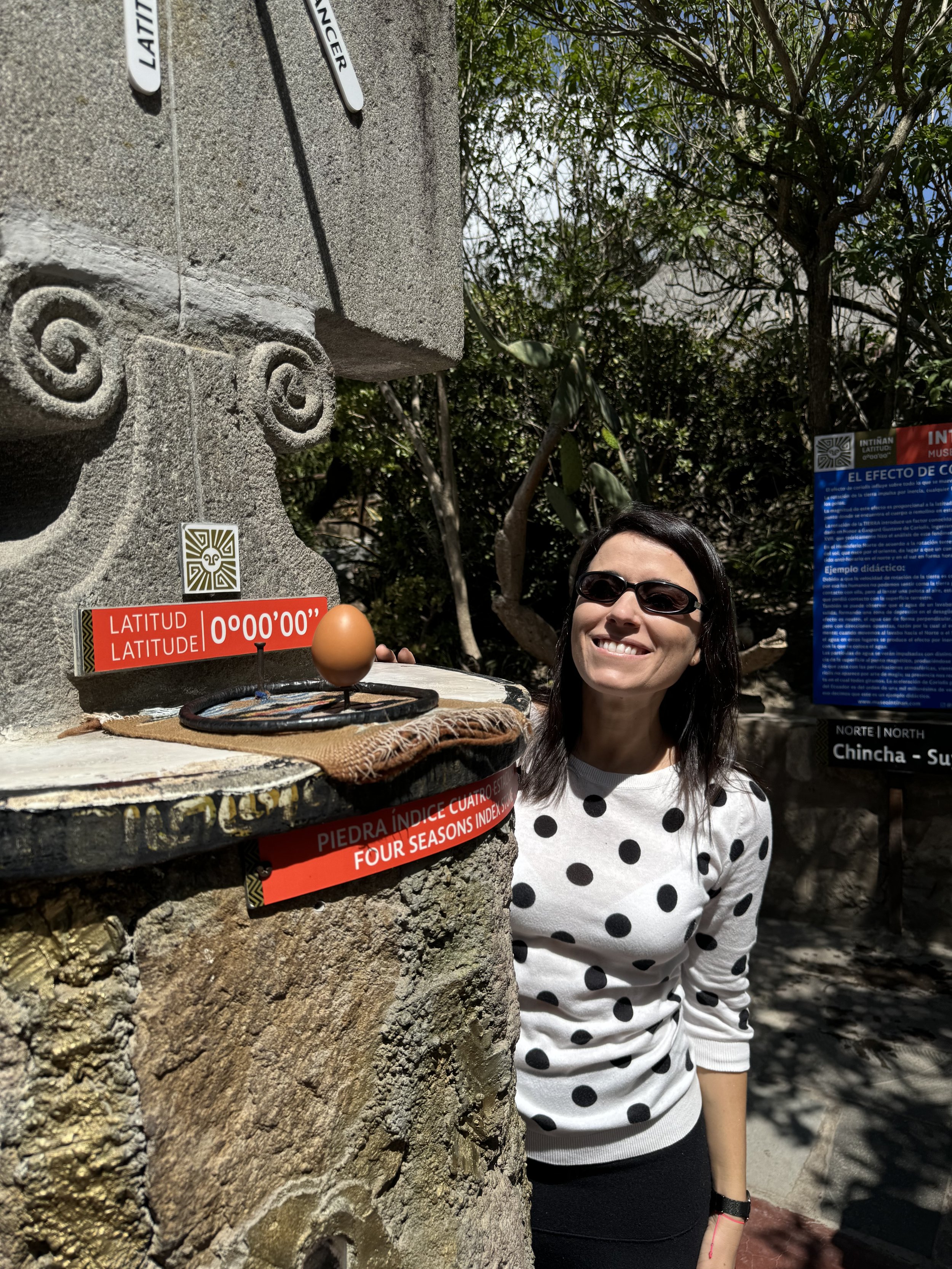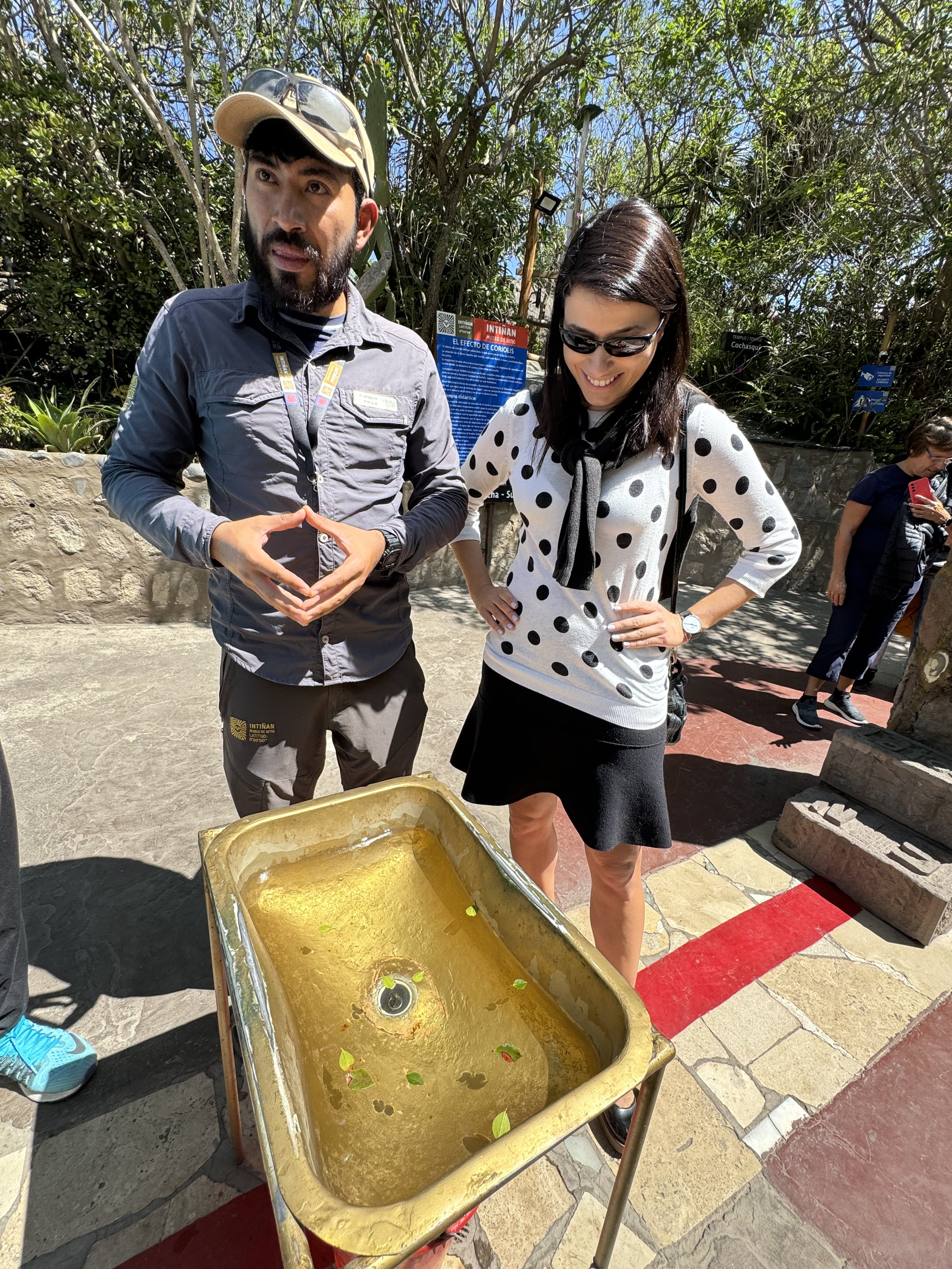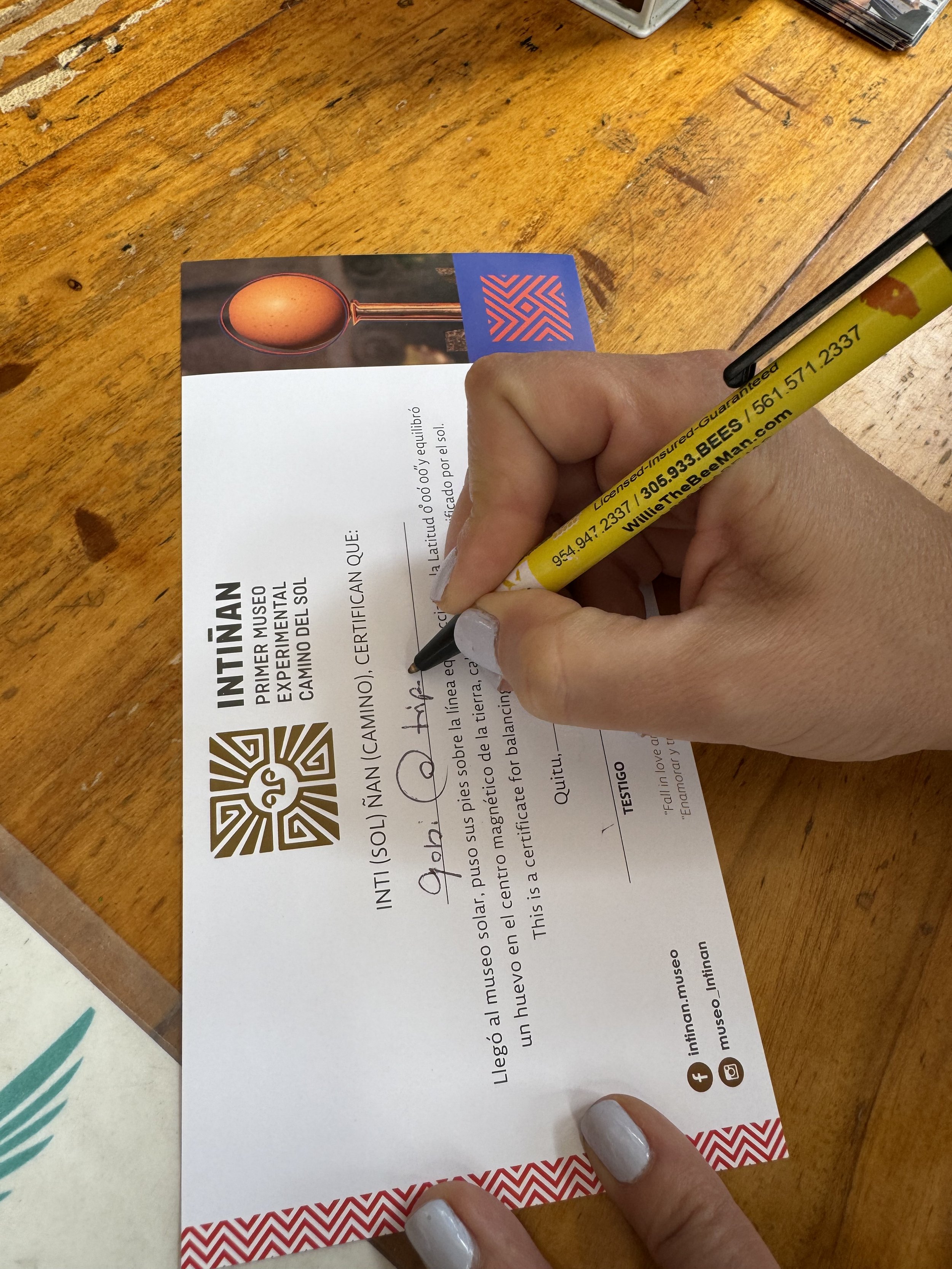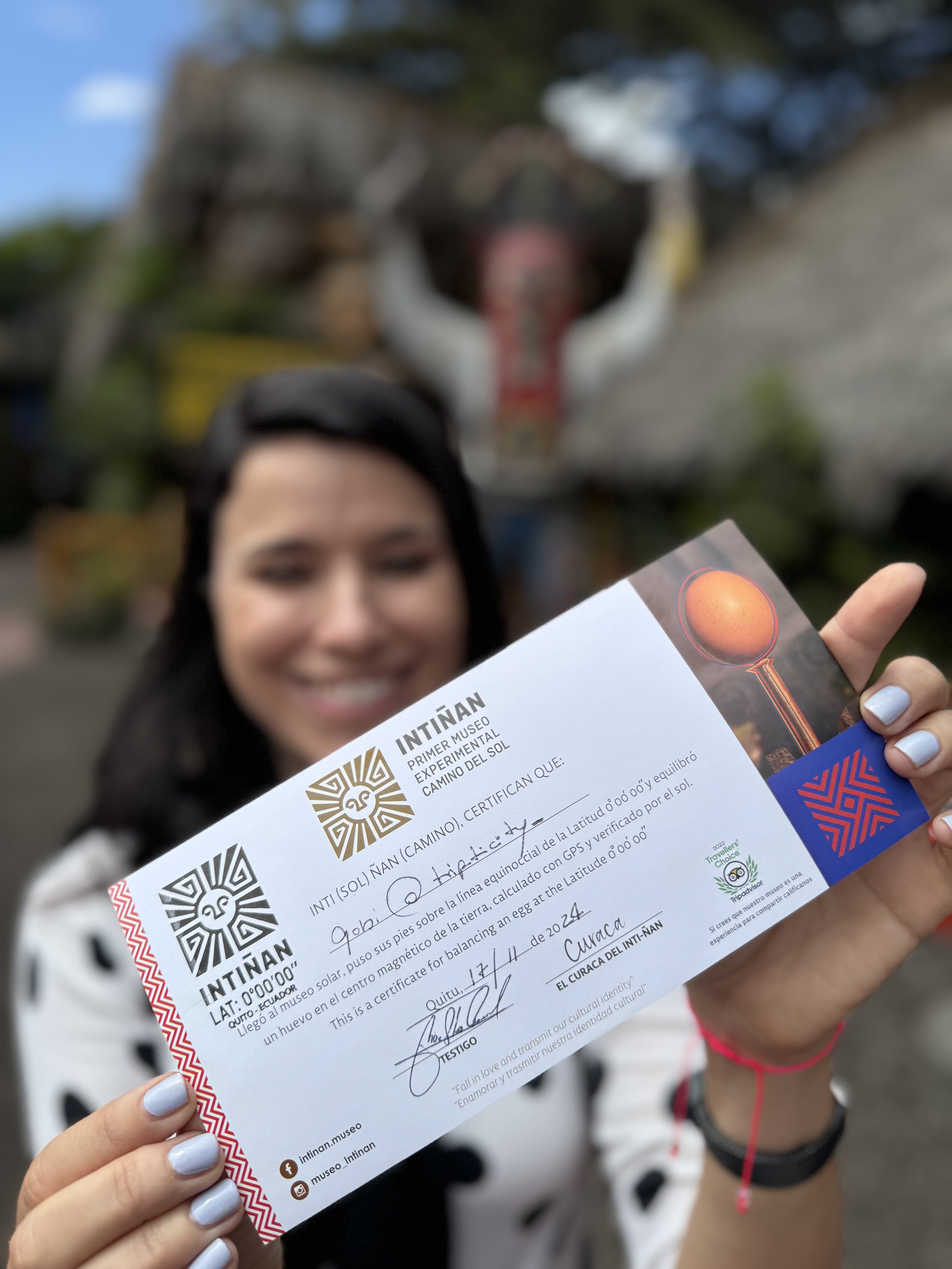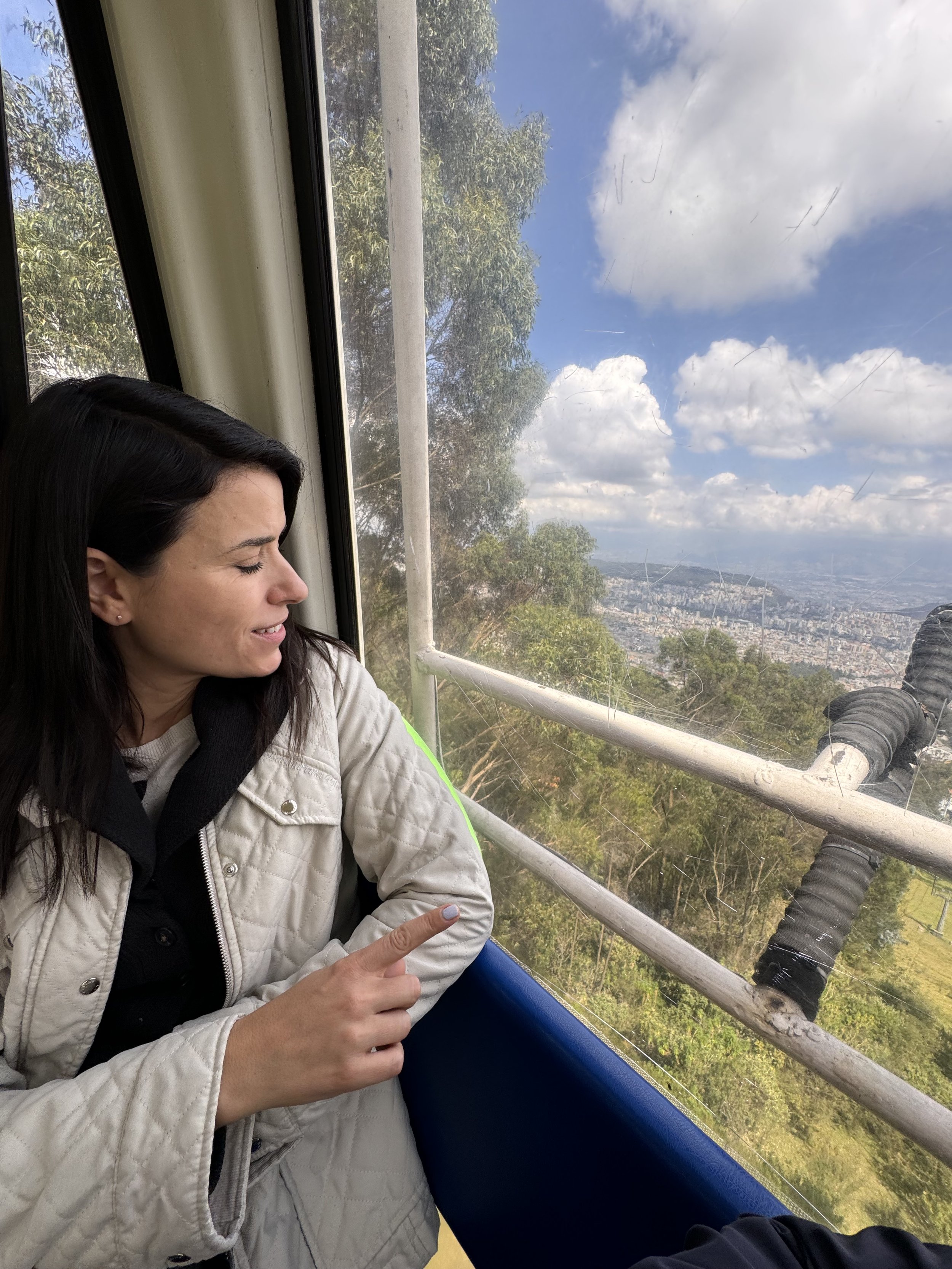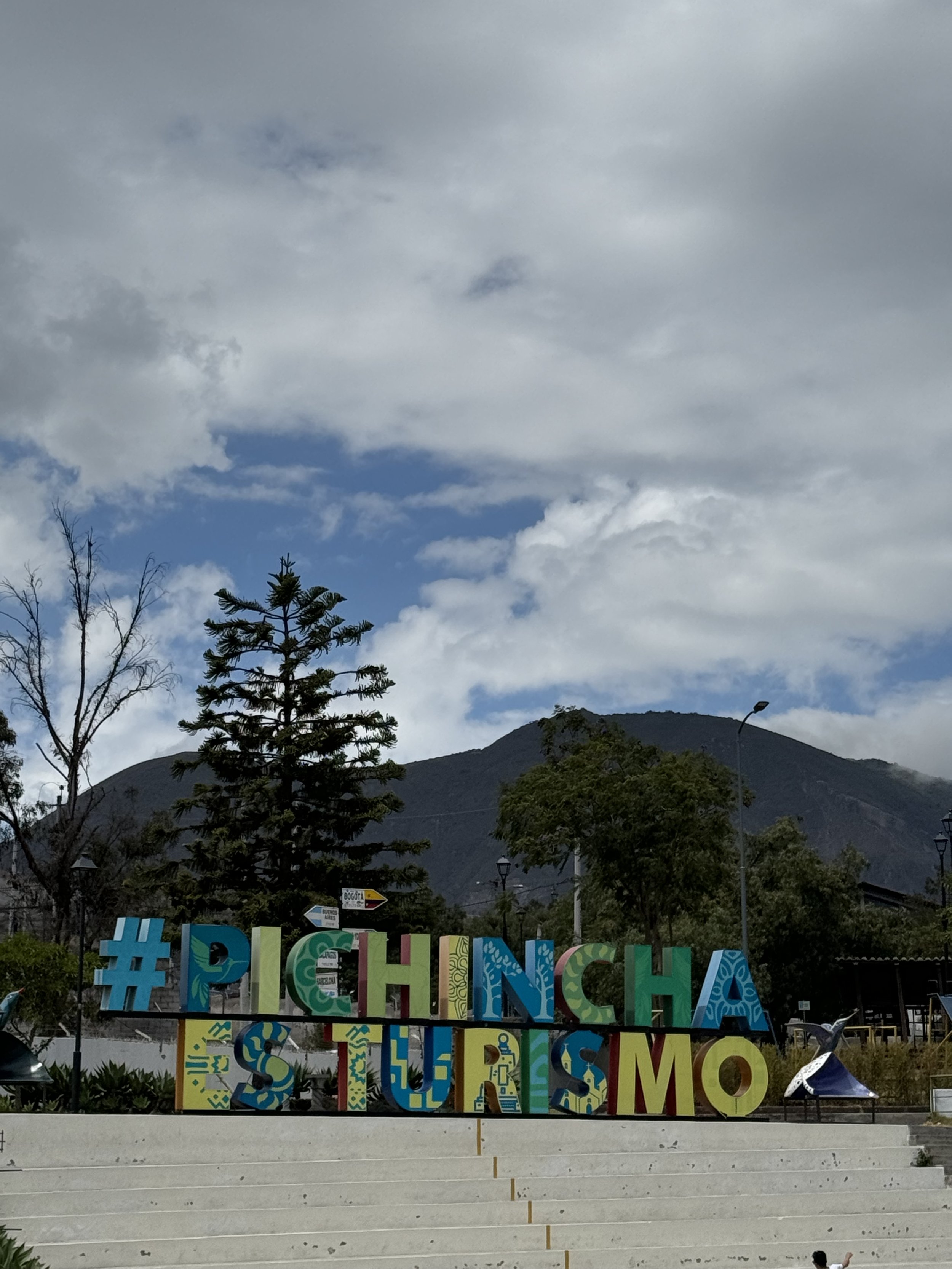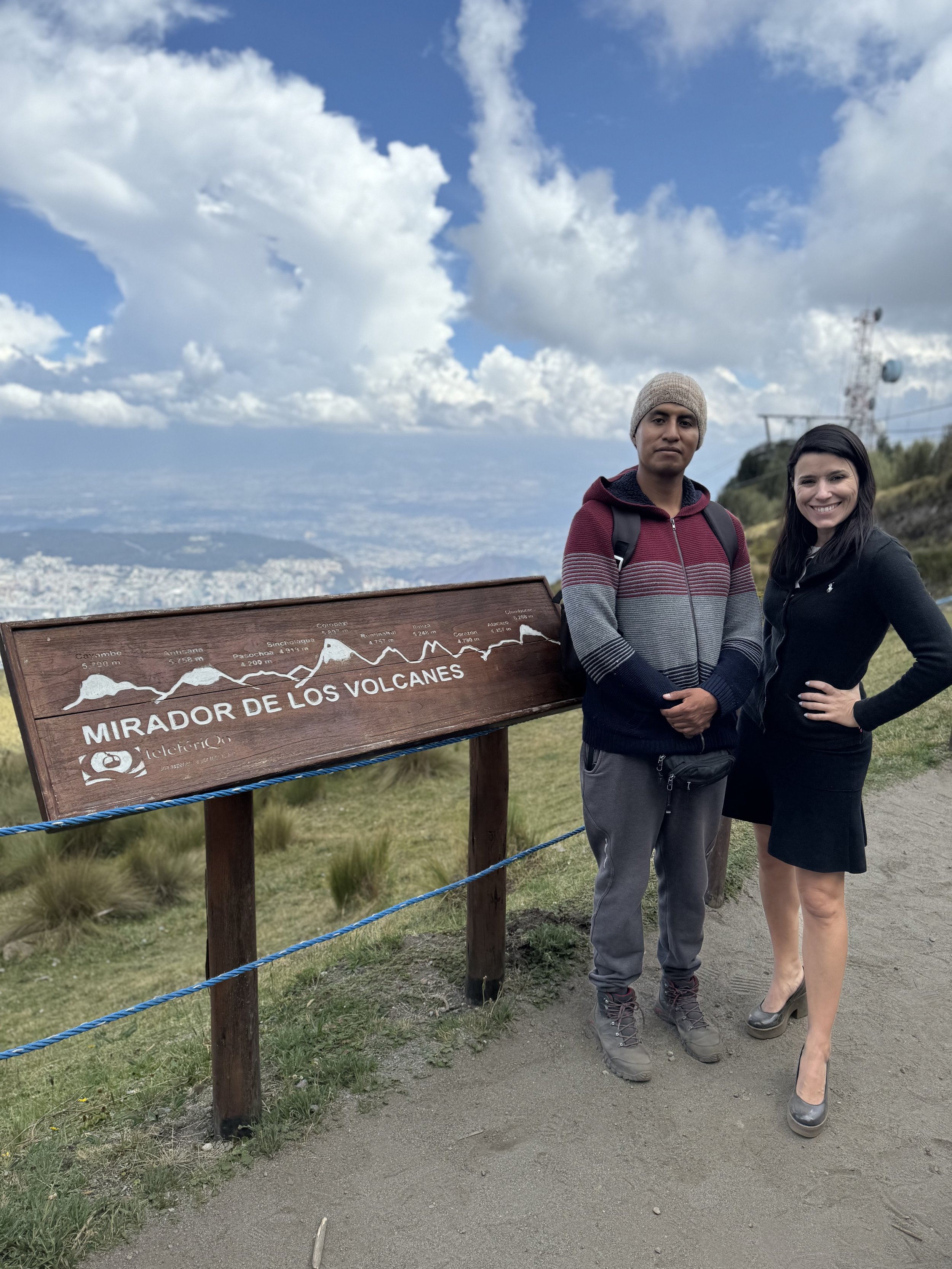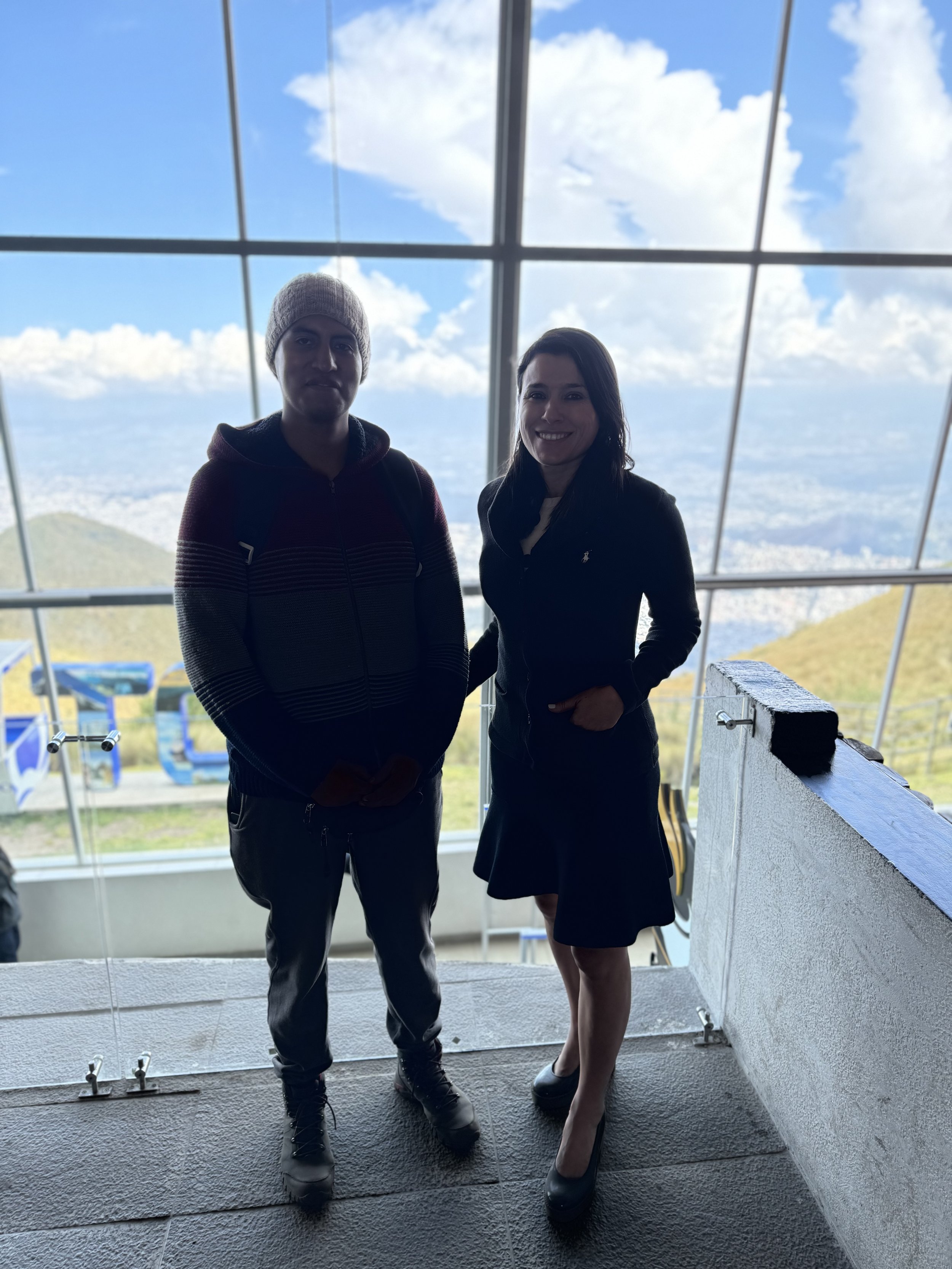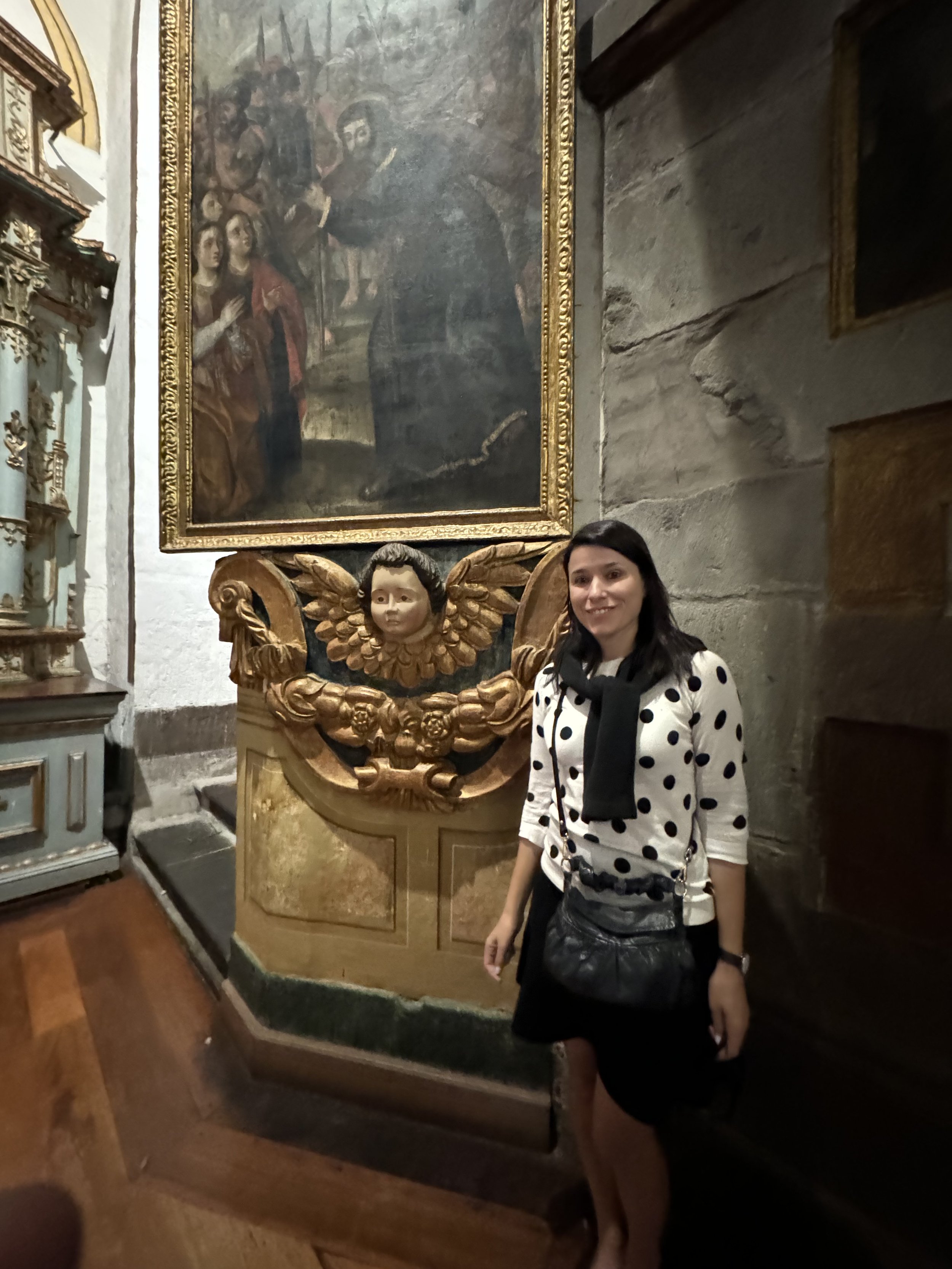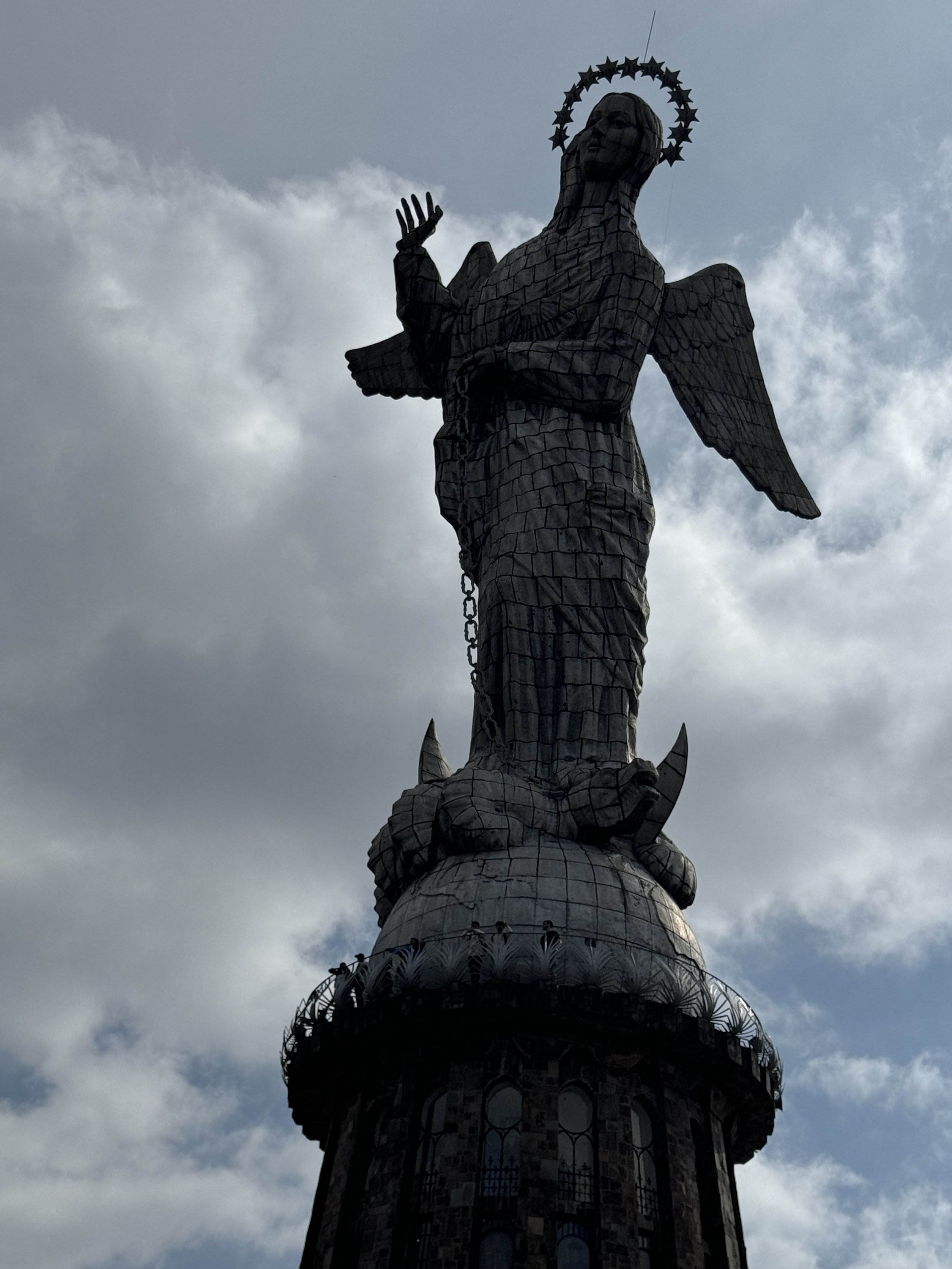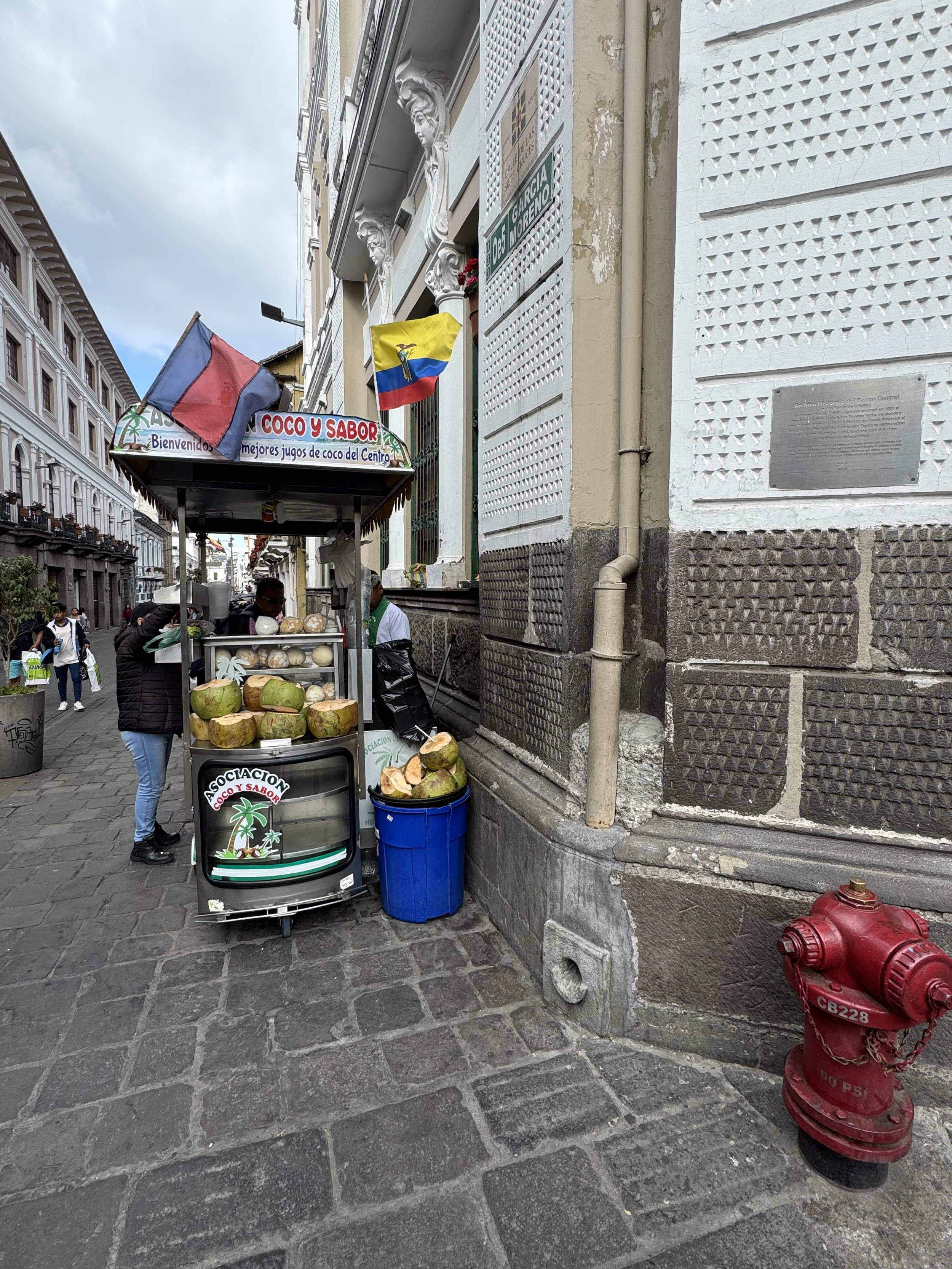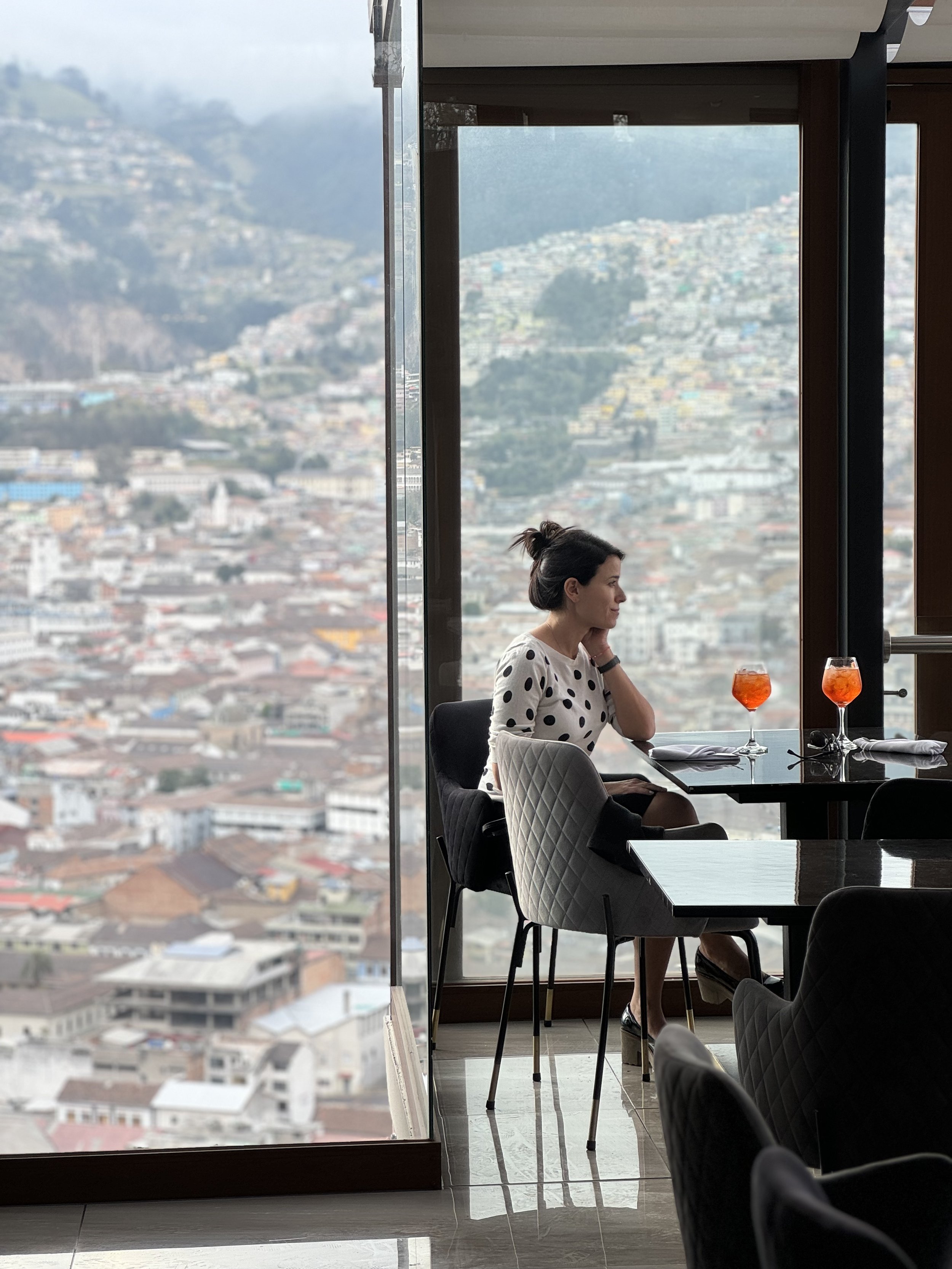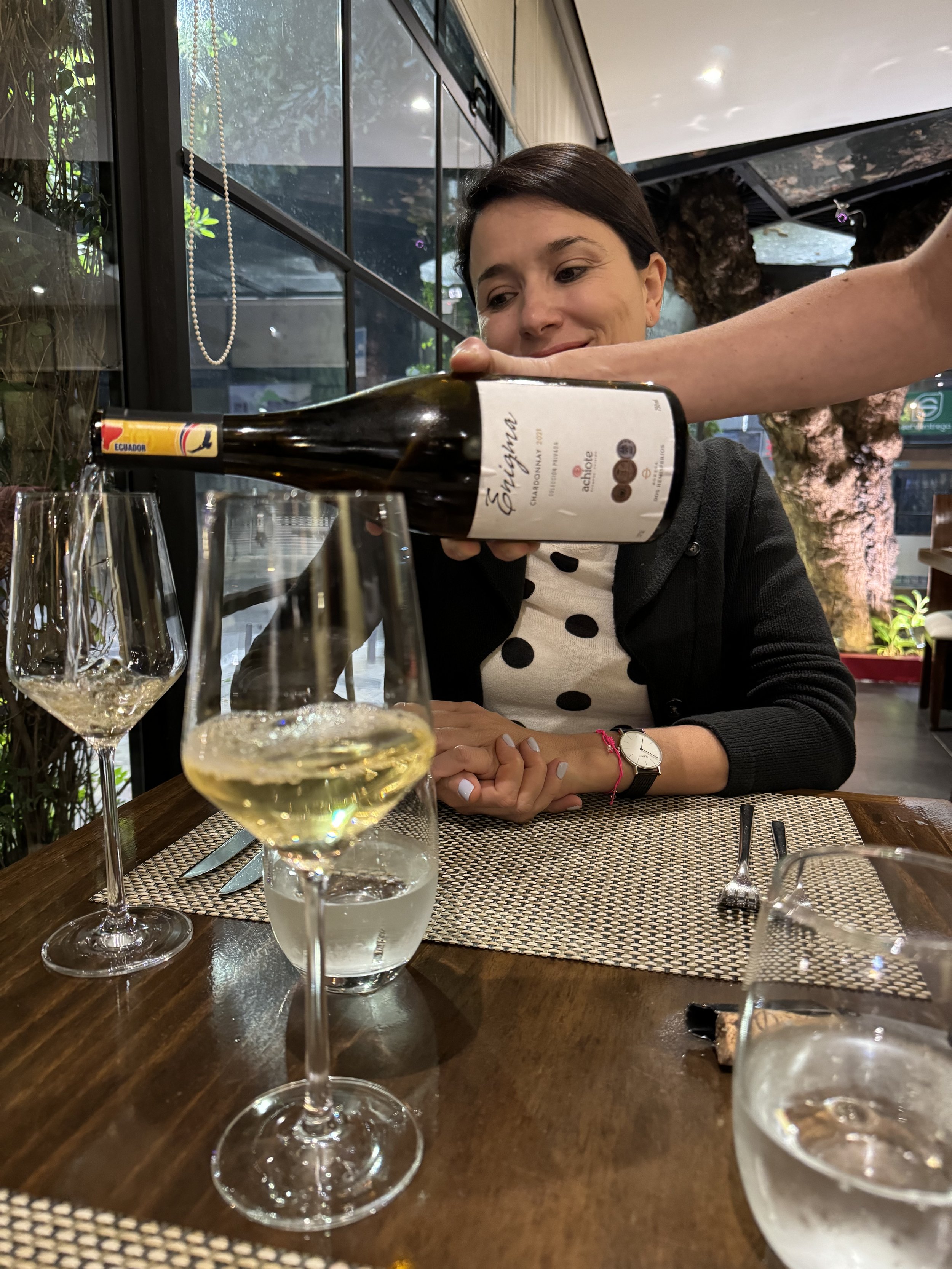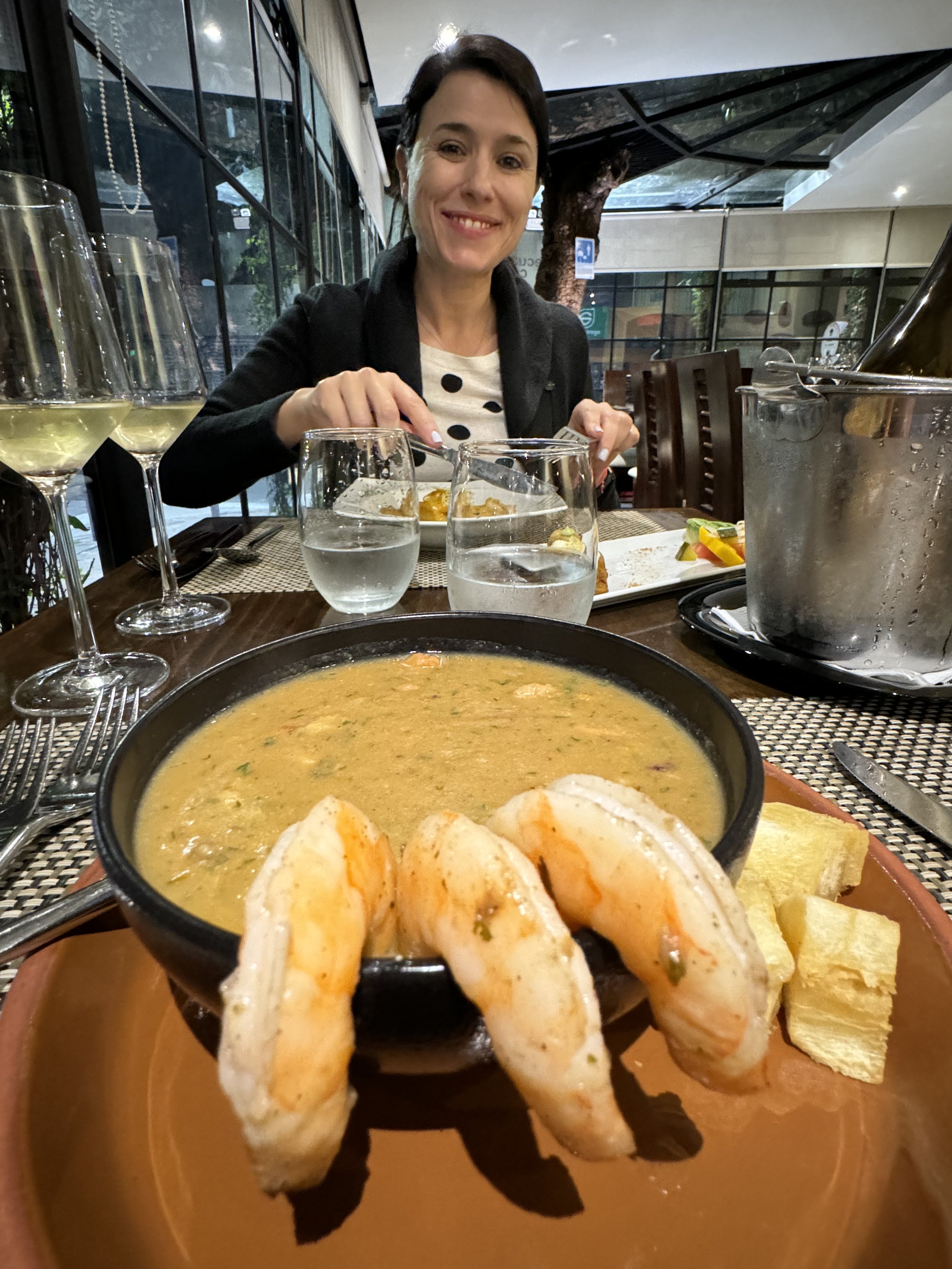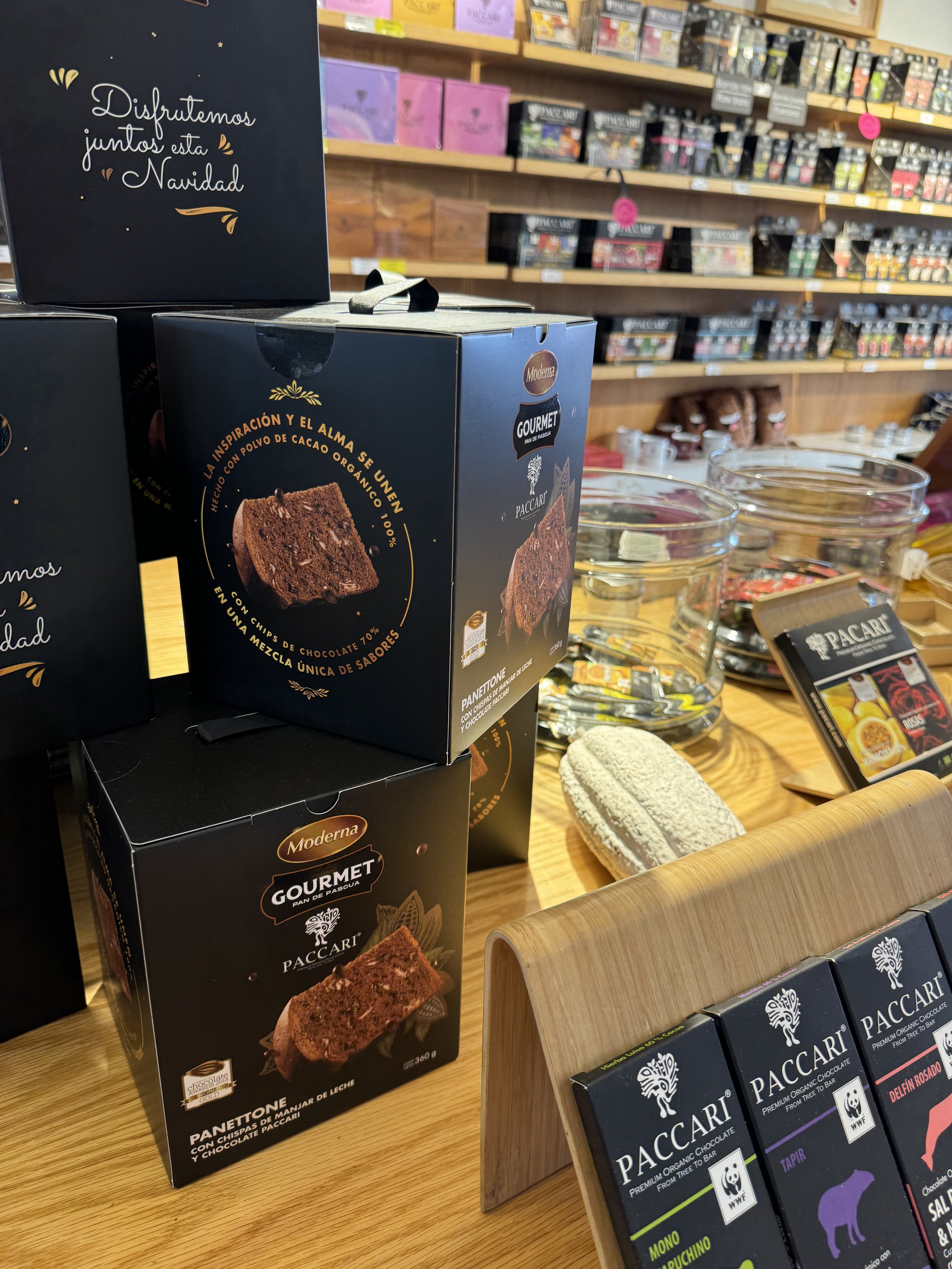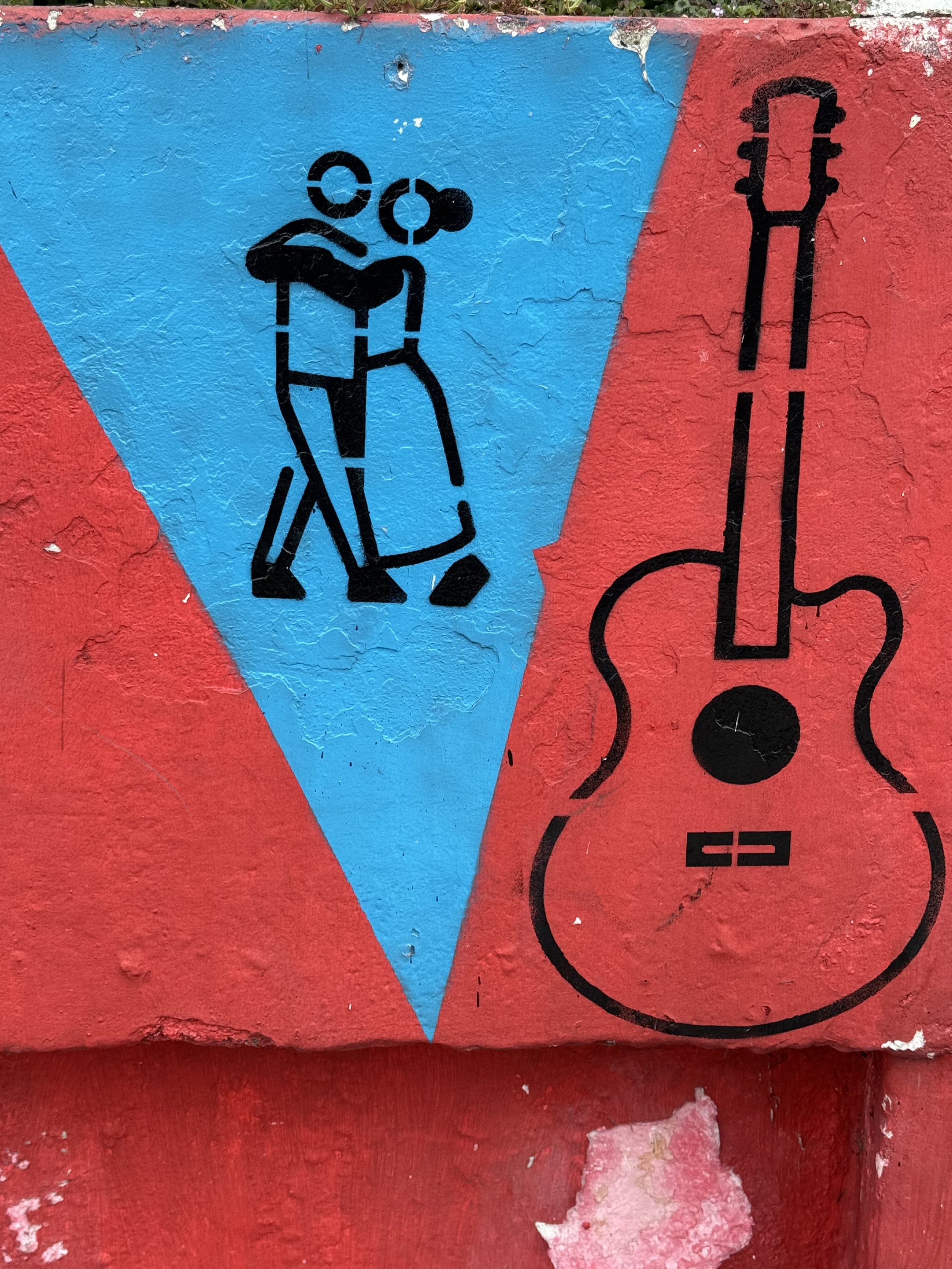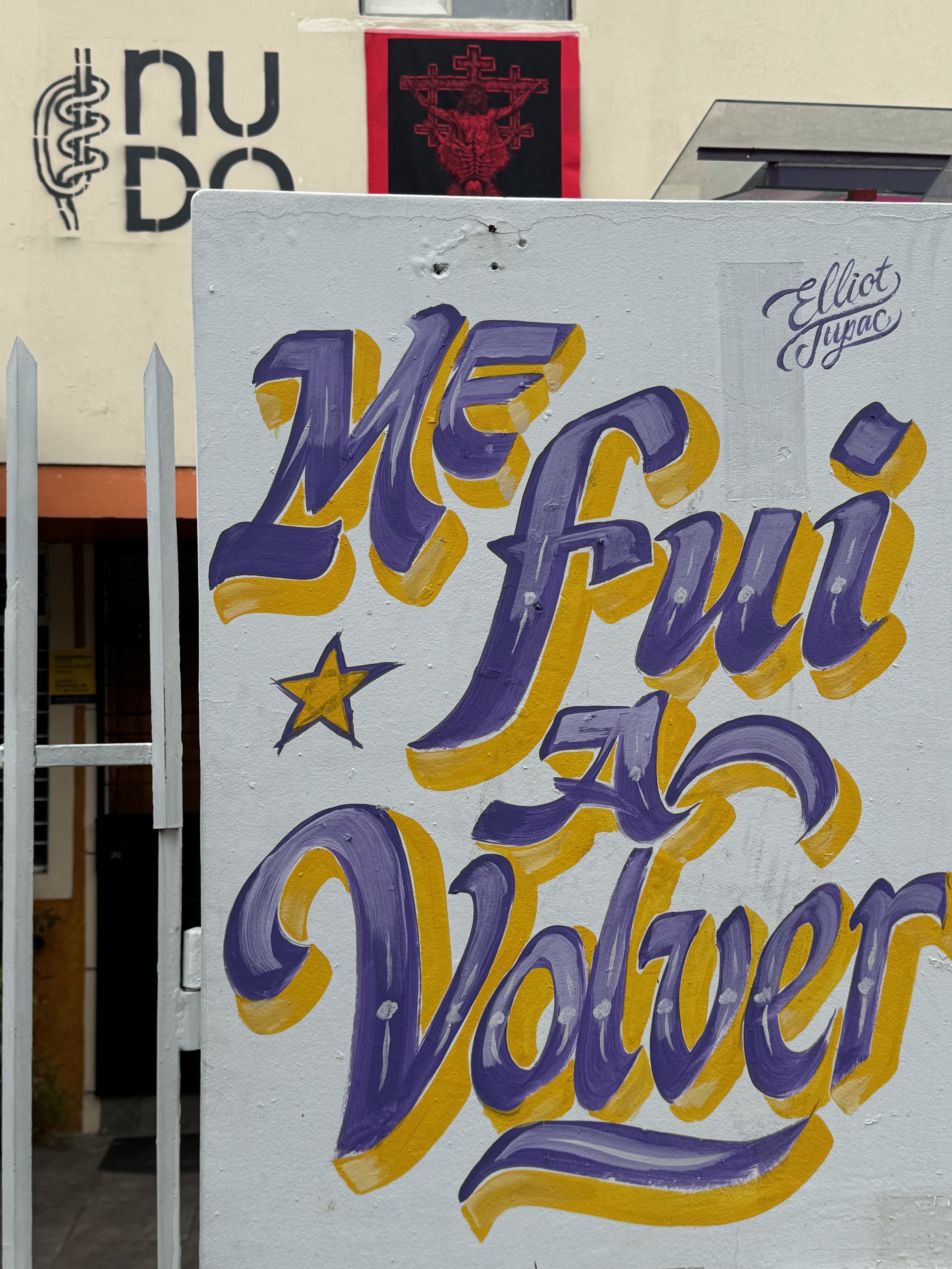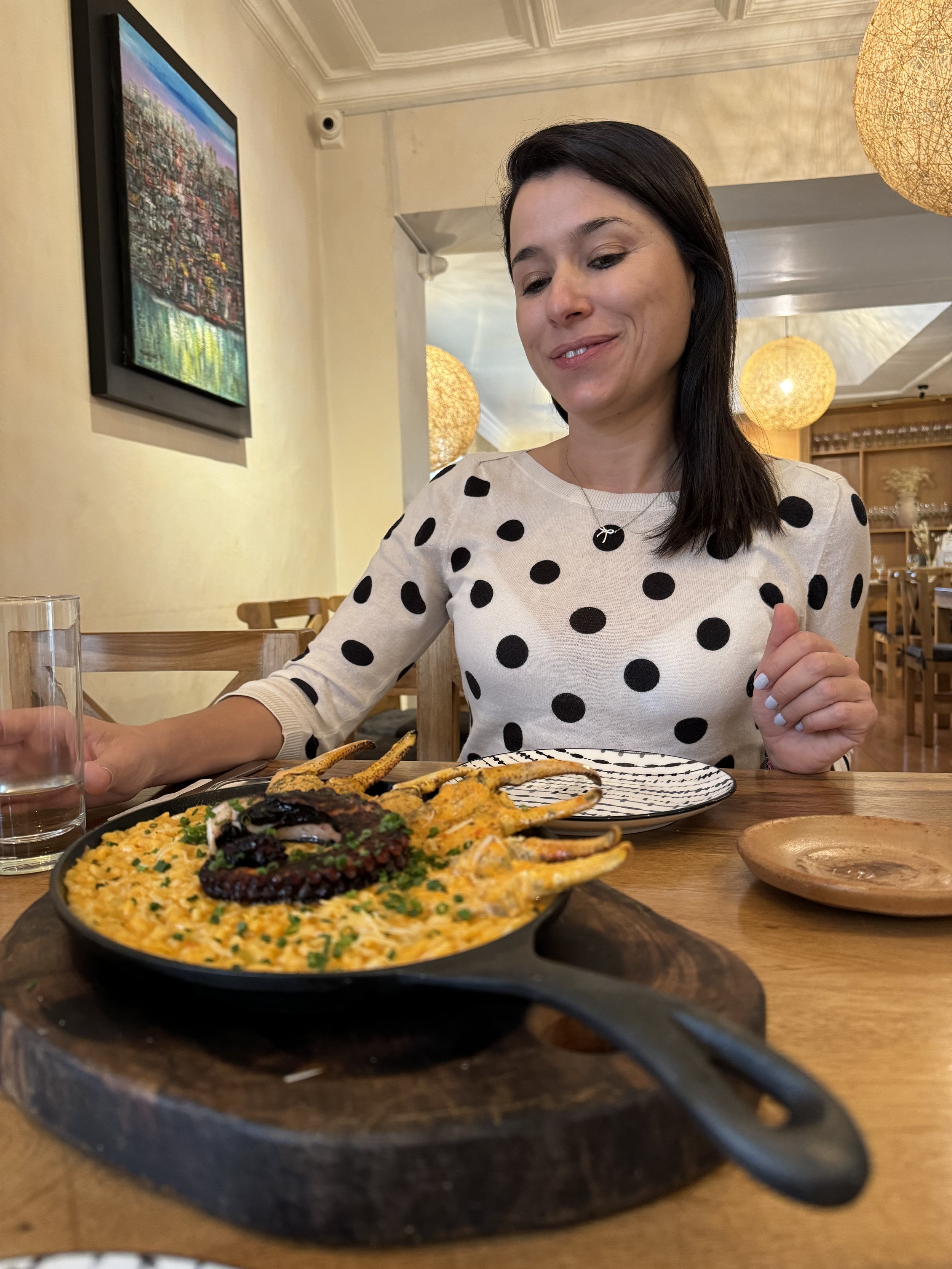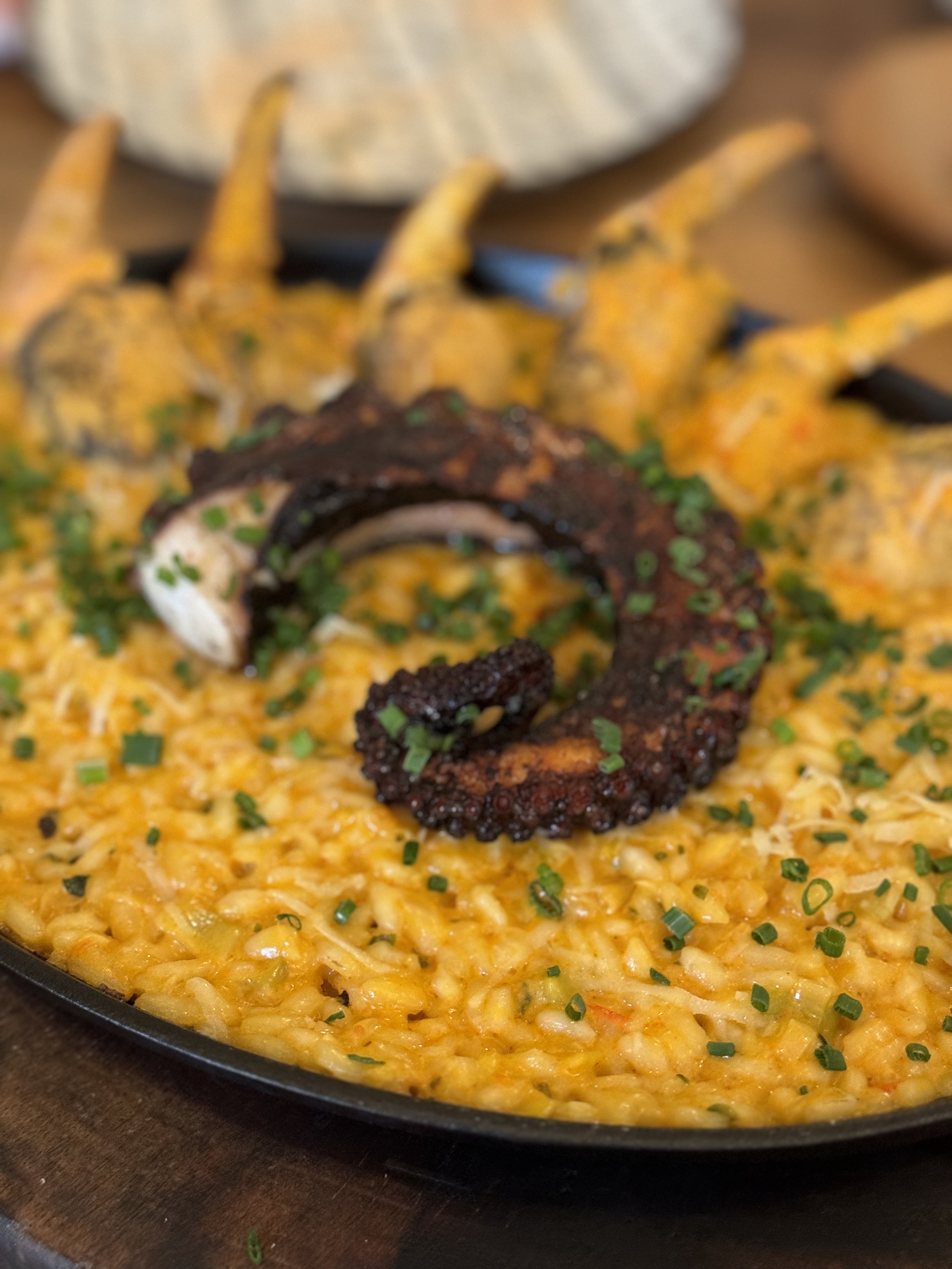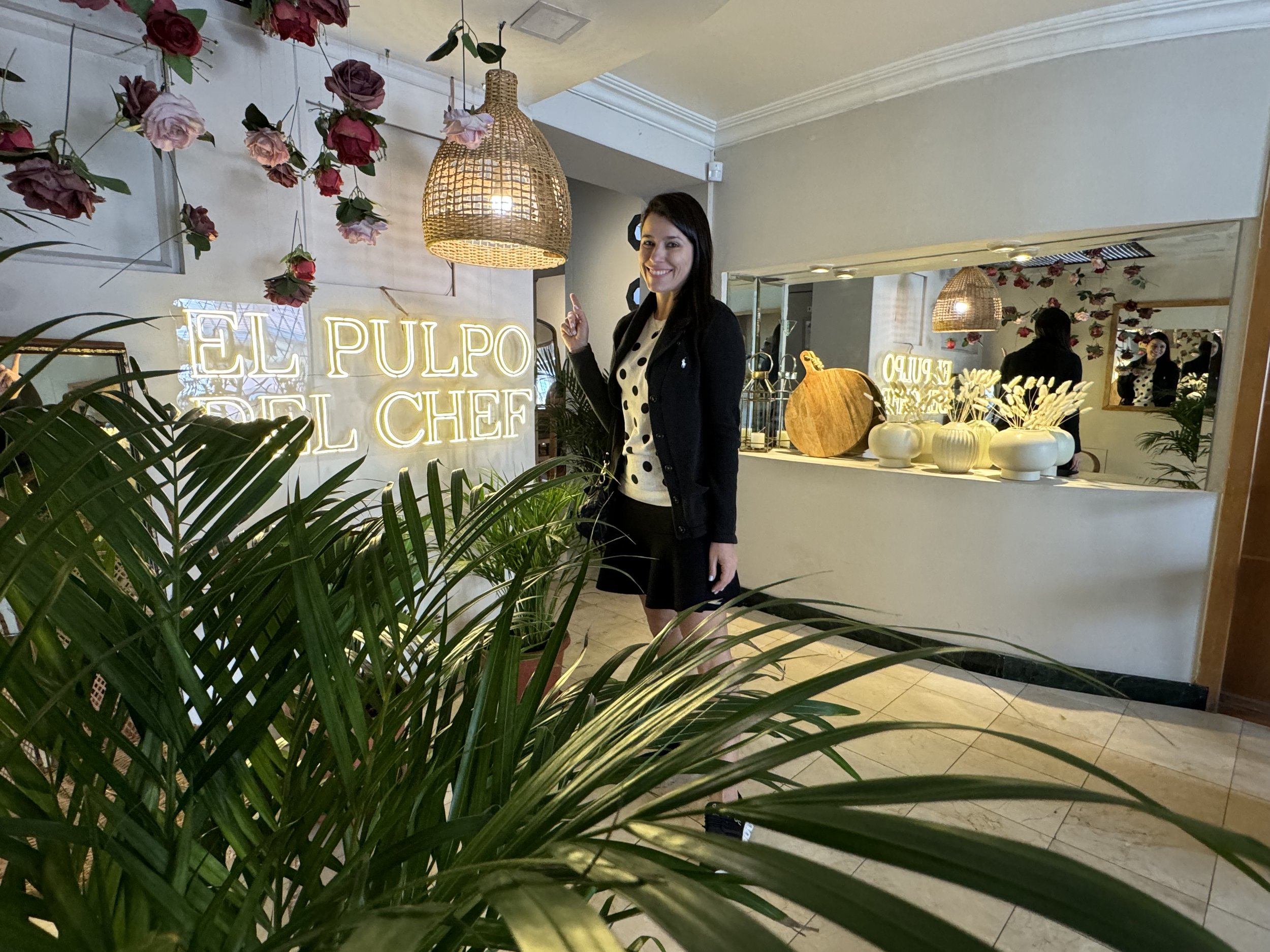Quito
A three-day getaway to Ecuador's capitalJust two flights from our city, with a very good connection at Lima's busy Jorge Chavez airport, it felt tempting to spend a weekend in Quito, the first city to be declared a World Heritage Site by UNESCO, along with Krakow, in 1978.
Famous for its historic center, its location and the high altitude climate, which never changes. Of course, the sun always rises and sets at 6 o'clock in the morning and evening and the temperature remains fairly uniform throughout the year, somewhat cool, due to the altitude. It is located in the inter-Andean region of Ecuador, on the Guayllabamba river basin, on the western slopes of the Pichincha volcano, at an average of 2850 meters above sea level. For this reason it is considered, after La Paz, the second highest altitude capital city in the world.
Once we finished the immigration formalities at the modern Mariscal Sucre international airport, we took an Uber to our hotel in La Floresta, where we were assigned a suite on the top floor with a view of the city and even the Virgen Alada (Winged Virgin).
The trip took about forty-five minutes and cost about U$25.
We got ready and left for the Basilica of the National Vow, Basílica del Voto Nacional, designed by the French architect Emilio Tarlier, inspired by Notre Dame Cathedral. The church was built in the 19th century with the intention of consecrating the Republic of Ecuador to the Sacred Heart of Jesus. Of neo-gothic style, it is one of the most outstanding in South America and has a lot of ornamentation, especially the gargoyles that represent the Ecuadorian fauna.
It is possible to climb the towers, about 115 meters high, to admire the landscape of the capital. The entrance fee to the church is U$2 and the ticket to the towers is U$4. An option for those who do not want to climb the towers is to cross to the bar in front, the Mirador Basilica Rooftop, mainly for the views.
We continue towards the historic center of Quito, along Calle de las 7 Cruces, the Garcia Moreno, one of the oldest streets in the city, which crosses the colonial area. At the end it becomes a staircase that climbs El Panecillo hill, but the recommendation is not to do it without a local because it is known dangerous neighborhood to cross to get to the top.
Walking through the steep streets of the historic center, crossing its squares and convents, even without a tour, is an unmissable plan to appreciate the very beautiful Spanish colonial architecture reflected in churches dating back more than five centuries.
We detour for a moment to the Sucre National Theater square, Teatro Nacional Sucre. Then we headed to the Convent of San Agustin.
From there, to the Benalcazar square, plaza Benalcazar, where there is a statue in his honor. Sebastián de Benalcázar is credited with the foundation of Quito on December 6, 1534. A statue was erected in his honor, and next to it we tasted one of the typical Ecuadorian street sweets, the particular mango with vinegar and salt.
Next was the Basilica of Our Lady of Mercy, Basílica de Nuestra Señora de la Merced. The building, like almost all the historic buildings in downtown Quito, is white. It was Saturday so the streets were very crowded with locals strolling and countless carts offering other delicacies, from chopped fruit to succulent salchipapas and even grilled pork skin. Unbelievable.
Then we headed to the Church and Convent of San Francisco, Iglesia y Convento de San Francisco, with its very colorful square. It is known as 'The Escorial of the New World'. A very important religious architectural complex from 1537. In its cloister the works of the Quito School stand out and its entrance is free.
The San Francisco square is one of the largest in Quito. There stands the stately Relais & Châteaux Casa Gangotena hotel.
There is also the Yumbos chocolate house and the Sinners. brewery.
We got lost among the thousands of locals who went through the pedestrian streets to the Church of the Company of Jesus, Iglesia de la Compañía de Jesús, to marvel at its carved and gold-plated walls. It has an admission fee of U$6.
The volcanic stone facade is not as extraordinary as that of San Francisco, but what is surprising is its interior. It is absolutely unmissable. A Spanish baroque jewel of the XVII century.
On the way to Independence Square, we stopped at the Church El Sagrario, located -of course- on Seven Crosses Street.
Once in the Plaza de la Independencia or Plaza Grande, , in the heart of the city, we had fun with the vendors of ponche, an egg white foam with sugar. They, impeccably dressed in a white uniform and cap, like sailors, very traditional from Quito. Of course we tasted the local delicacy. Very sweet.
The square is the main square and around it are several other iconic buildings such as the Palacio Carondelet, seat of the president's government in Ecuador; the Metropolitan Cathedral; Catedral Metropolitana; the Archbishop's Palace; the Municipal Palace and the Plaza Grande Hotel.
We then drive to Iglesia de Santo Domingo, square and church, on our way to La Ronda, the famous little street where the nights are lively, with its picturesque bars and restaurants.
We went back to San Francisco square, we had a date with Mr. @tripticity_ on the rooftop of Casa Gangotena. With a breathtaking view of the colonial architectural complex and the bustling plaza life, we ordered signature drinks and a seafood snack. Before it got dark, as the safety situation in Quito calls for caution, especially during those days when power and water outages had the population in an uproar, we took an Uber and returned to the comfort of the NH Hotel to rest. NH Hotel to rest.
The next day, we had hired Jhonny de El Guia Tours to tour around the half of the world.
In Ecuador half the world is marked by a yellow line dividing the northern and southern hemispheres.
After a trip of about an hour, we arrived at the Inti Ñan Museum, Museo Inti Ñan, where we were guided by the staff of the complex, who told us about the characteristics of their country and the history of the discovery of latitude zero.
Then he invited us to perform several experiments, both of balance and gravity as the egg experiment, in which you have to get the egg to stand on a nail, precisely because of the gravity law.
Afterwards, Jhonny picked us up to take us to the Monumento de la Mitad del Mundo, a tourist complex in which, in addition to the obelisk, there are small museums with works by the artist Oswaldo Guayasamín, handicrafts, a train for a mini tour and restaurants.
We had some free time that we took advantage of effectively, a good walk for families and children, where photos are taken stepping on both hemispheres at the same time.
The equatorial line has about forty thousand kilometers around the world, it crosses oceans and thirteen countries, but it is right in Quito, actually about 30 kilometers from the center of where this geographical reference point is located, the imaginary crossing of the equatorial line, which divides the planet into two hemispheres and whose latitude is 0º 0'0''.
A clarification: the equatorial line does not pass right by the Monument but a few meters away, at the Museo Intiñán.
Then we got back into Jhonny's truck to cross the city towards the cable car. It was there when he offered us as a snack an ice cream of Salcedo, of various flavors and colors.
We luckily went up the TeleferiQo when the sky had cleared.
It is the highest cable car in the world.It is essential to bring a coat, because it reaches 4050 meters above sea level. The view of the city is amazing. It takes about twenty minutes to get to the top of the Cruz Loma hill, on the slope of the Pichincha volcano.
We took the classic pictures on the swing that gives the sensation of flying over Quito and went down.
Another trip with Jhonny to the Panecillo, , a viewpoint in the historic center, and where the iconic Virgen Alada de Quito is located, a silver statue about 40 meters high that can be seen from different points of the city.
By then the tour was over, so we asked Jhonny to drop us off in the historic center, we wanted to visit it again.
Then, we headed to Vista Hermosa, a restaurant with an impressive panoramic view, right next to Itchimbia Park. Quite a show of the Basílica del Voto Nacional and the whole city. We ordered some spritz and an octopus as an appetizer, while the sun was setting and the lights were starting to come on.
Soon, we returned to the hotel neighborhood, as we had made a reservation at the signature restaurant Achiote. A gastronomic package store. There we were offered to try Ecuadorian wine. We ordered a coastal chardonnay, the Enigma, from Bodega Dos Hemisferios, to accompany a casserole of plantains and seafood and shrimp with coconut juice. Delicious, gourmet. For dessert, we went for the tasting, in which the Ecuadorian chocolate one obviously stood out. Extraordinary.
The last day, after having run those two previous days, we took it easy. We decided to get to know the hotel's neighborhood.
La Floresta used to have its charm, with art galleries, cinemas and a wide gastronomic offer, a hipster touch, in which its street art from a decade ago is a bit shabby.
Some time ago many artists settled in the area, so there are still murals on the walls of the neighborhood.
We could not leave Quito without trying the drinkable version of chocolate. We opted for Paccari, with its premium organic chocolate proposal. We ordered two versions, 100% and 70% cocoa, the latter succulent and thick. While hot chocolate is not one of my favorites, I am a tea lover and acquiring knowledge of coffee thanks to Mr. @tripticity_, _, I went for it and tried it. Yummy, yes. Different. Sure, I never drink it, less in the mornings. But it was good.
By noon, before leaving for the airport, we decided to have a big octopus meal at the restaurant El Pulpo del Chef. Another extraordinary discovery by Mr. @tripticity_. It was there that I finally tried the patacones, a version of fried green plantains but with crab, octopus and prawns. And for the main course, an unforgettable risotto with grilled octopus.
Satiated with Quito's gastronomy and colonial architecture, we left for the airport, grateful for that express Ecuadorian weekend, but full of nuances.

